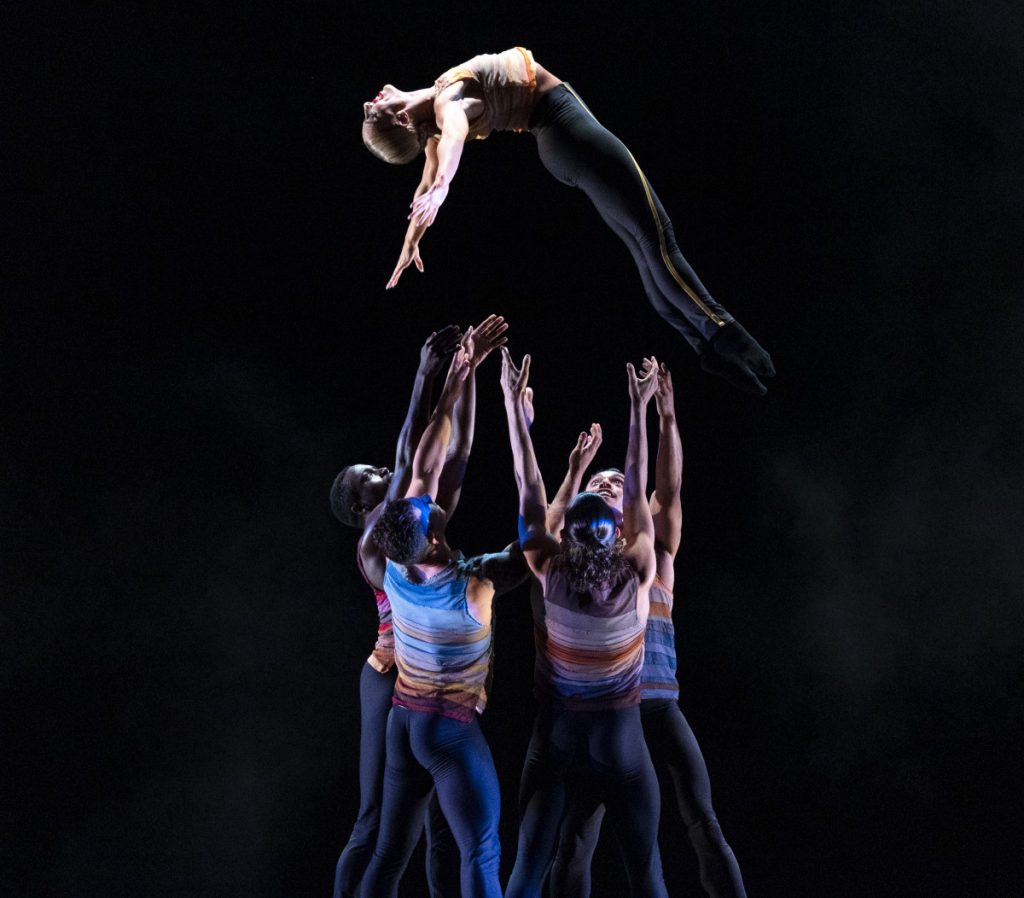
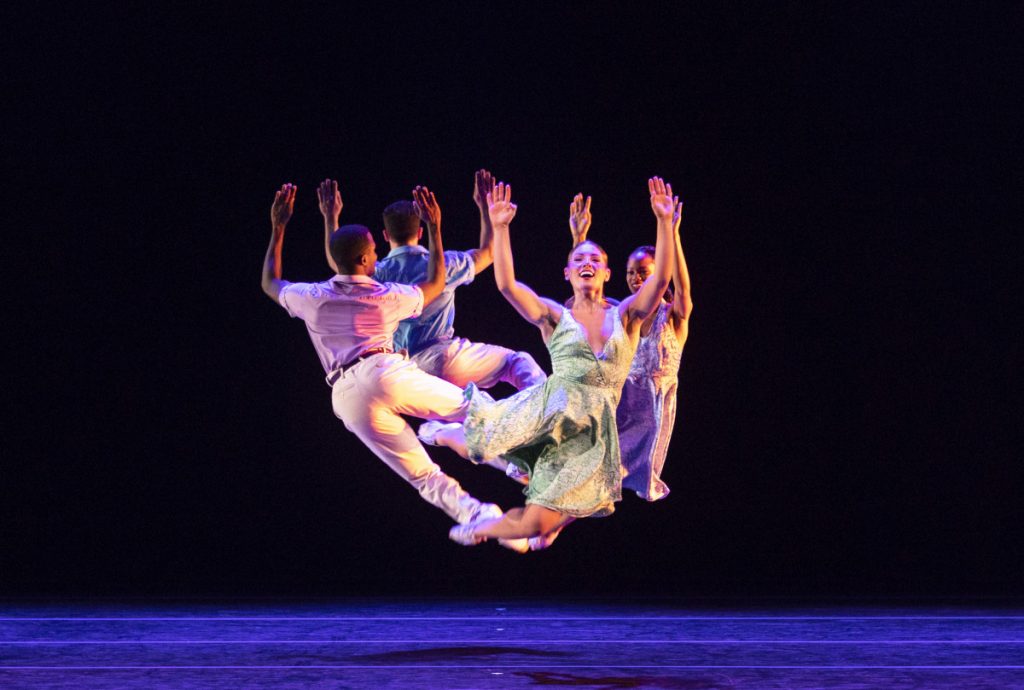
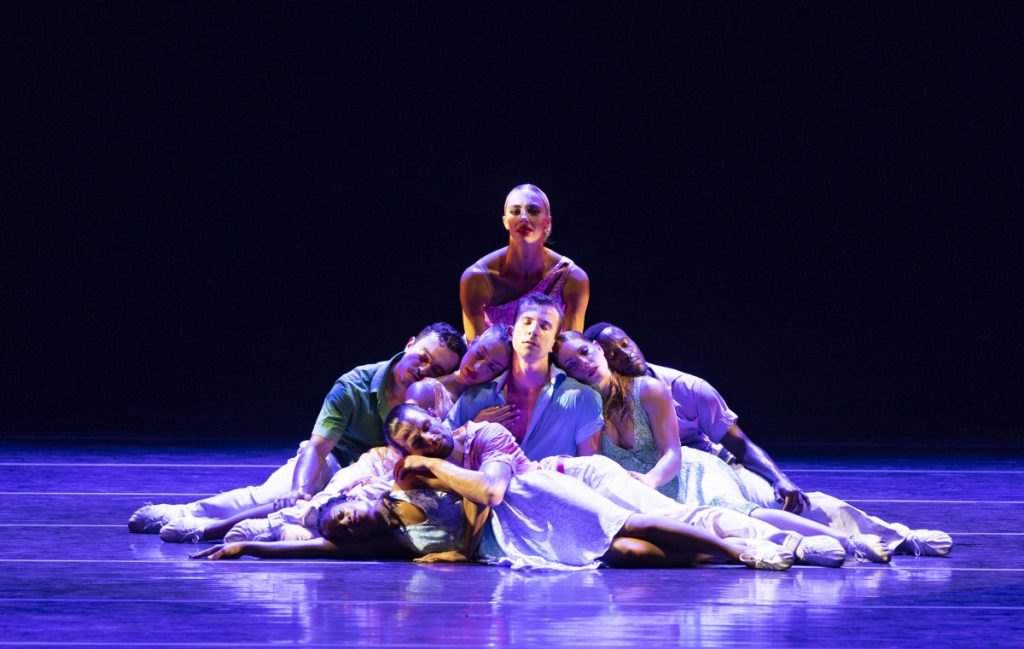
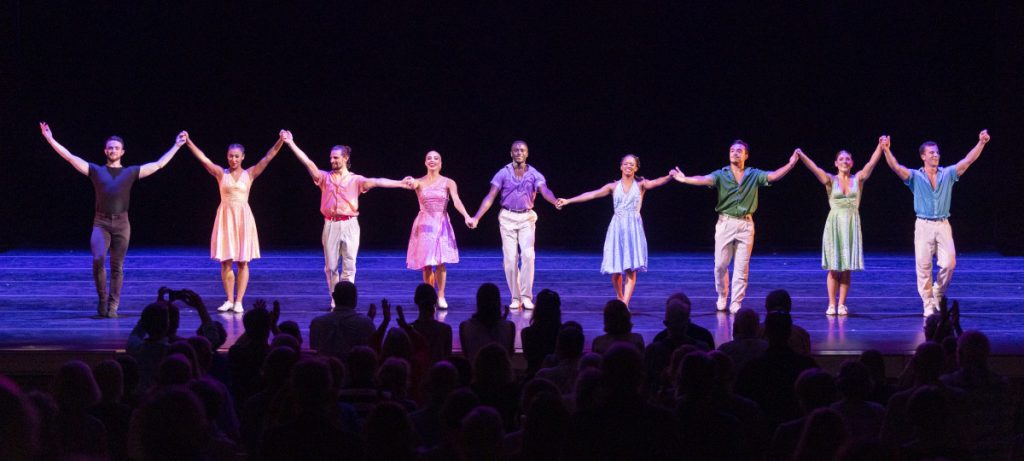




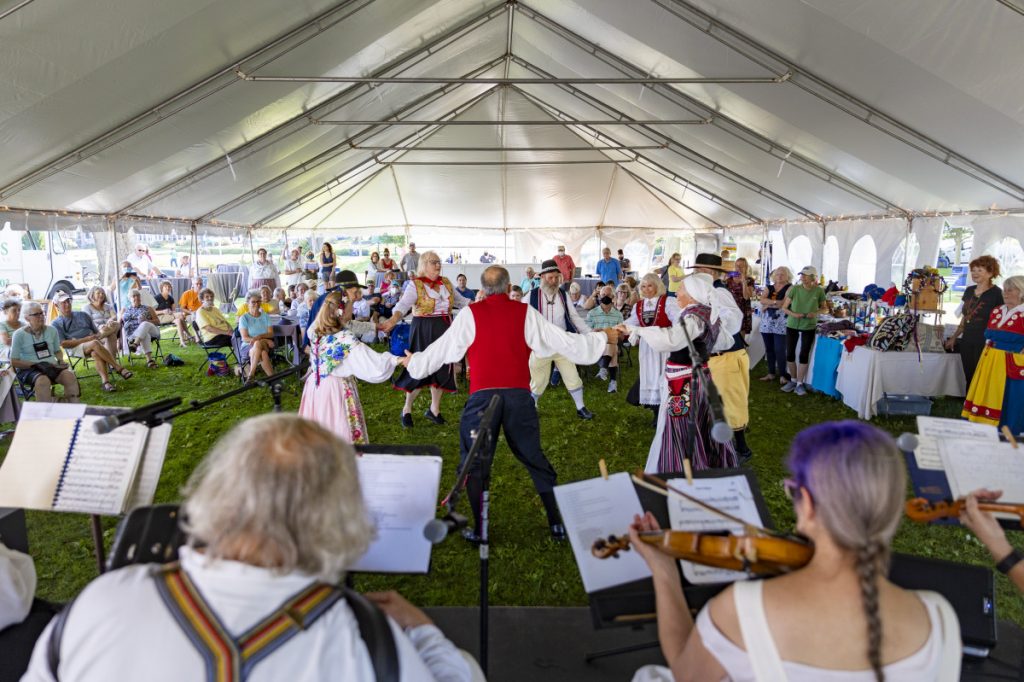
KRISTEN TRIPLETT – STAFF PHOTOGRAPHER


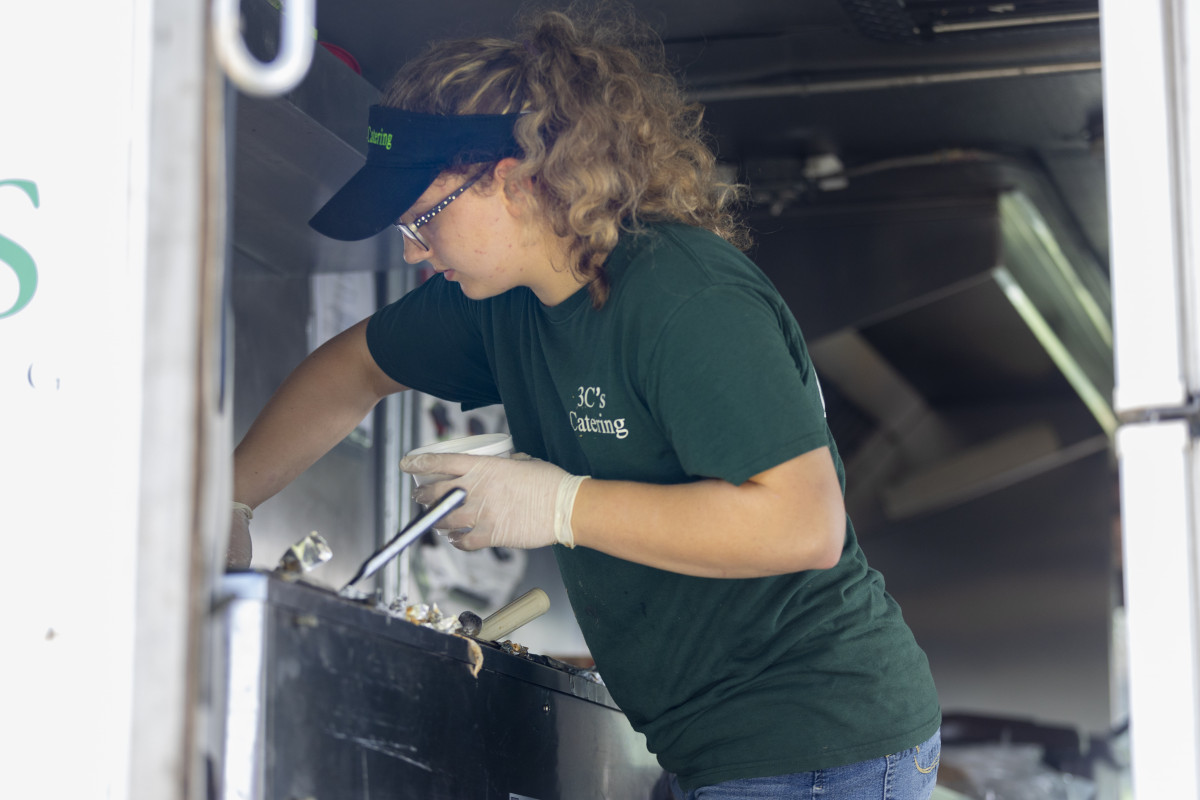


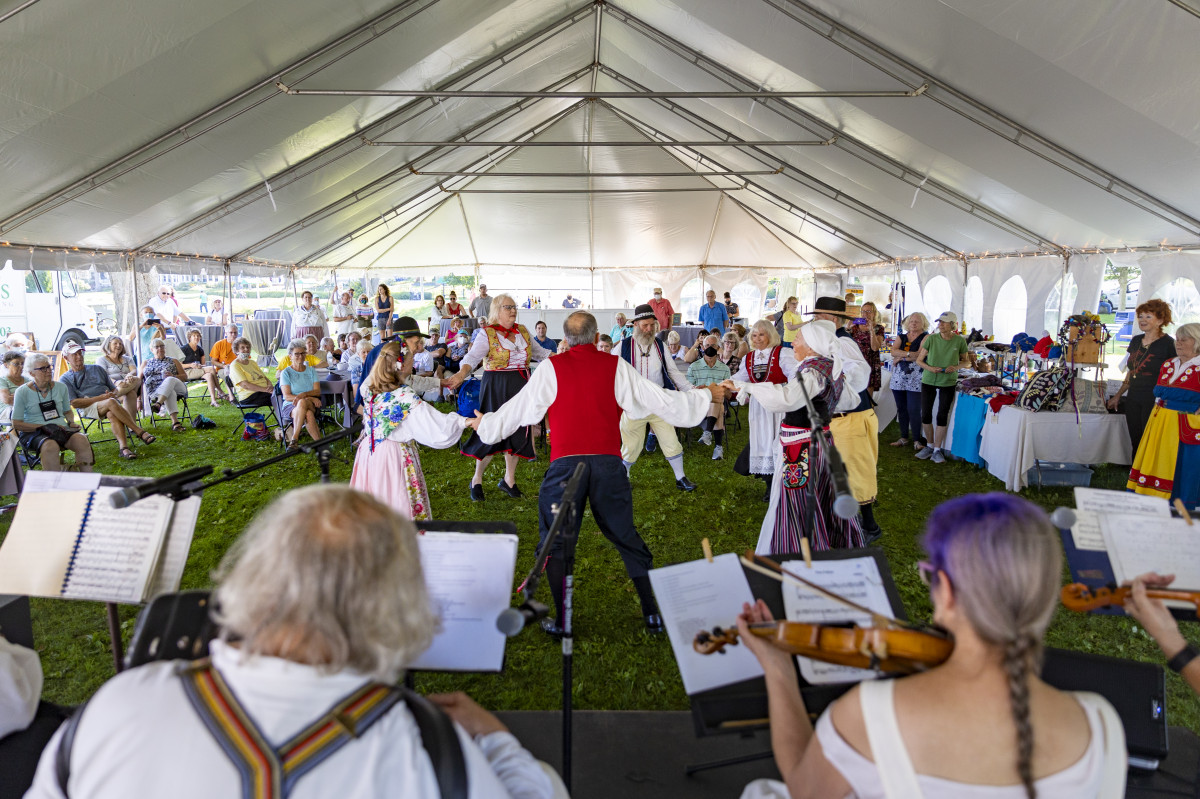
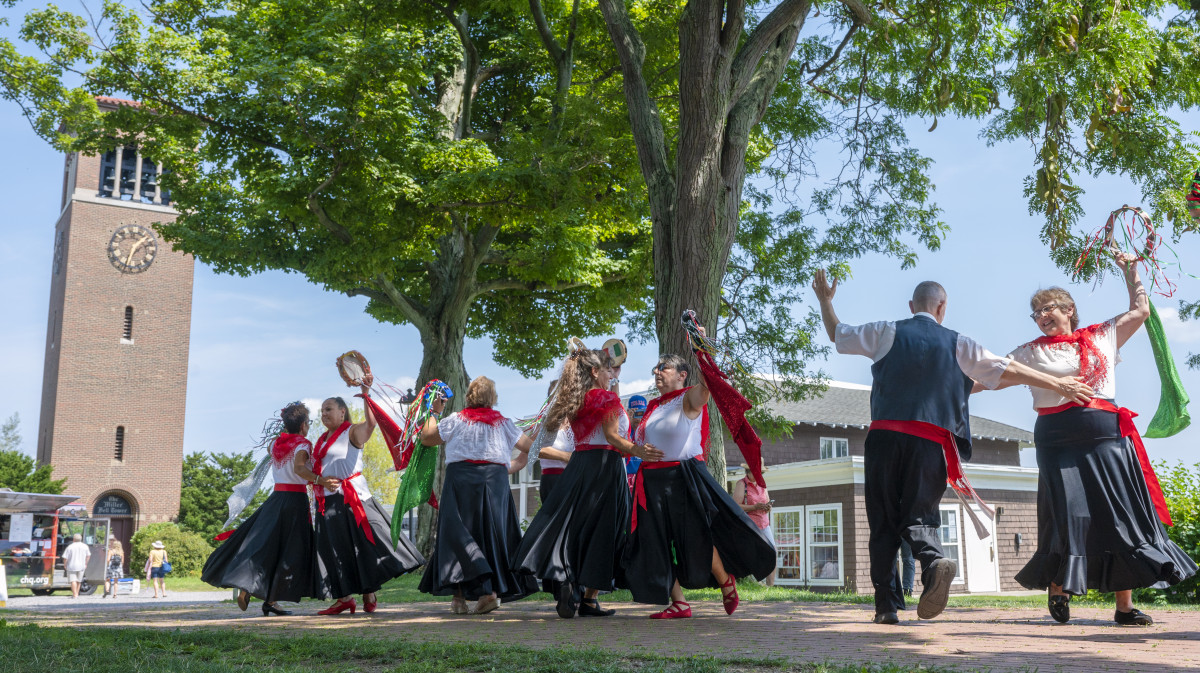

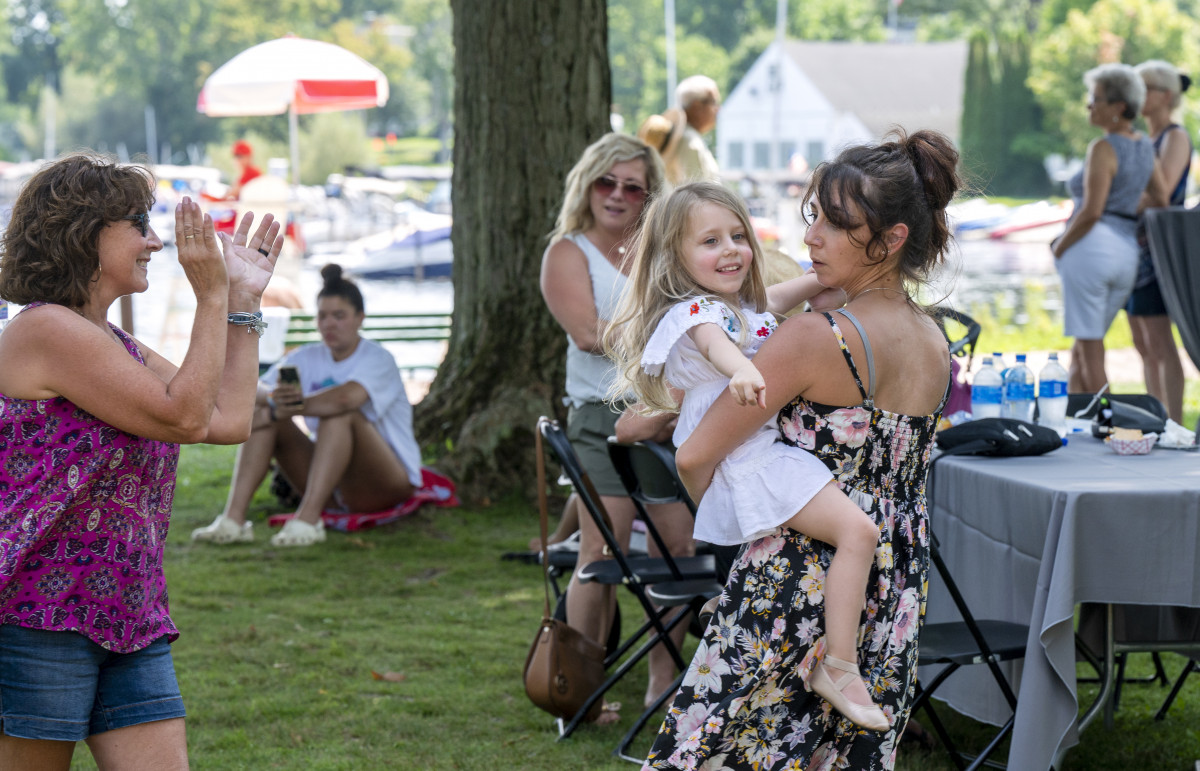
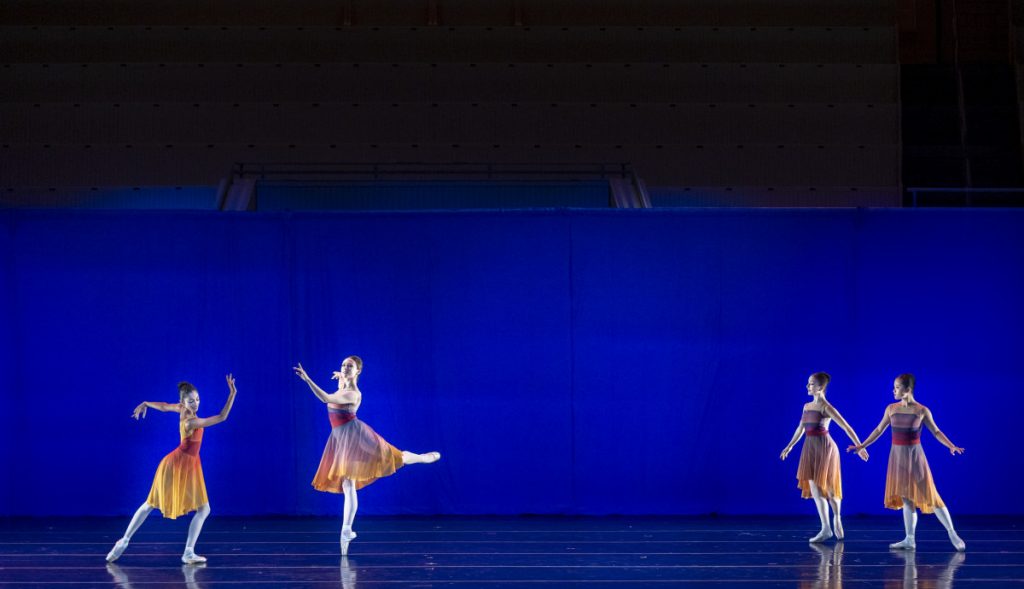
KRISTEN TRIPLETT – STAFF PHOTOGRAPHER
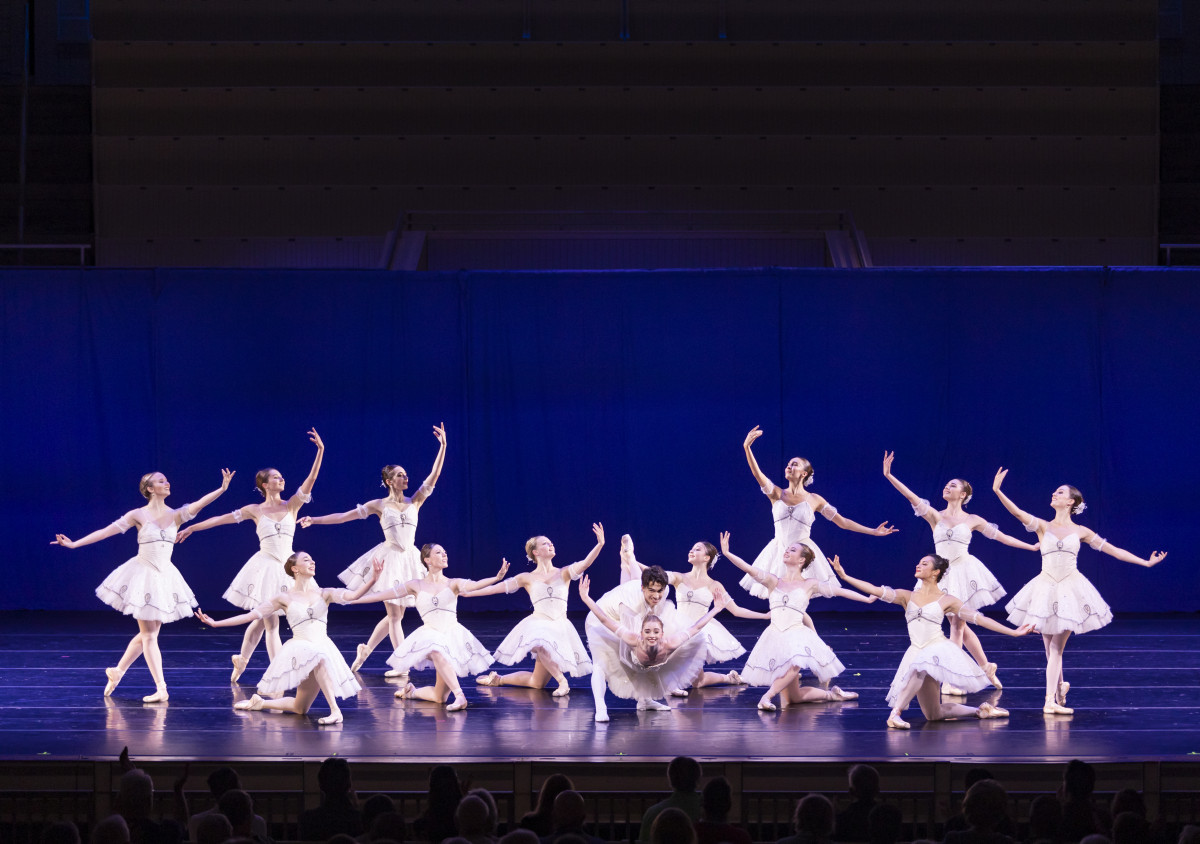
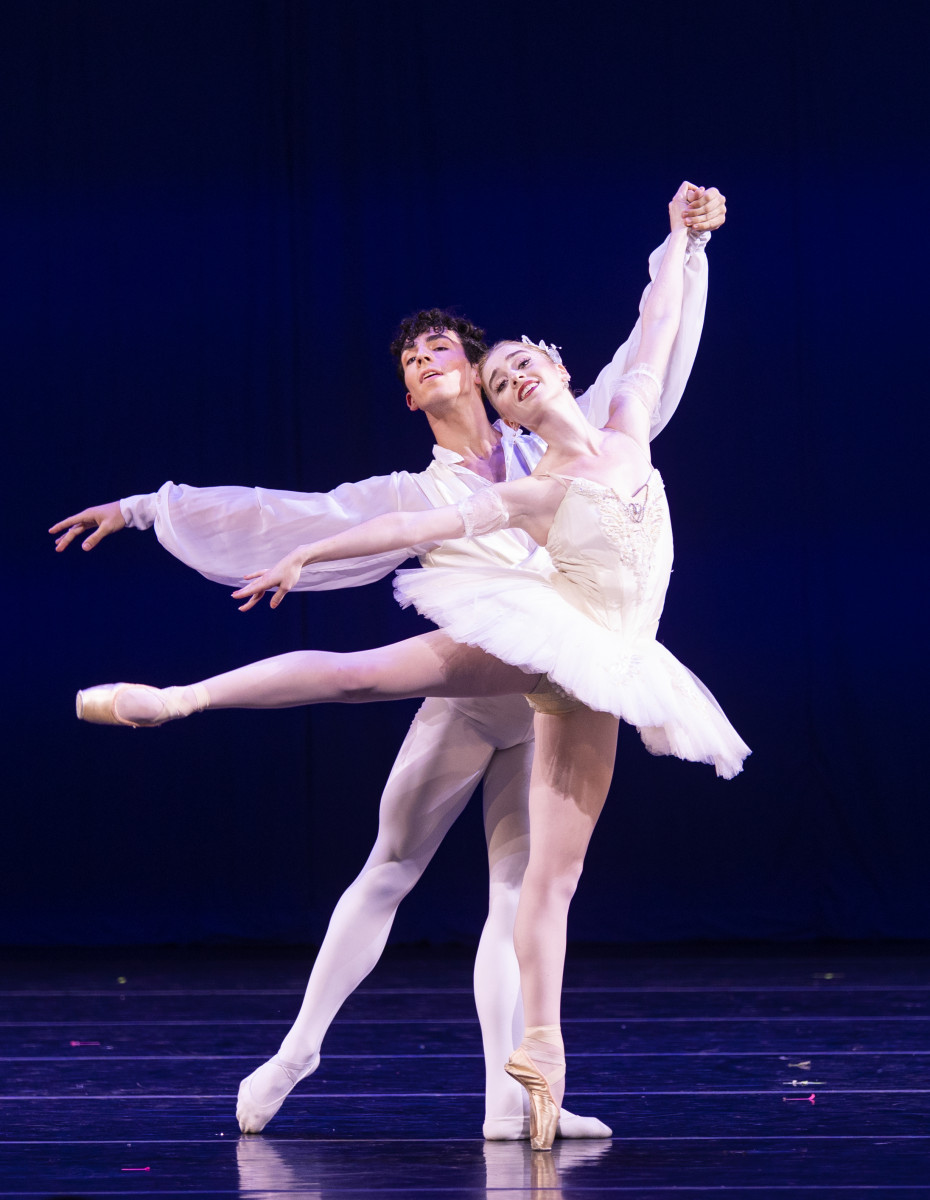
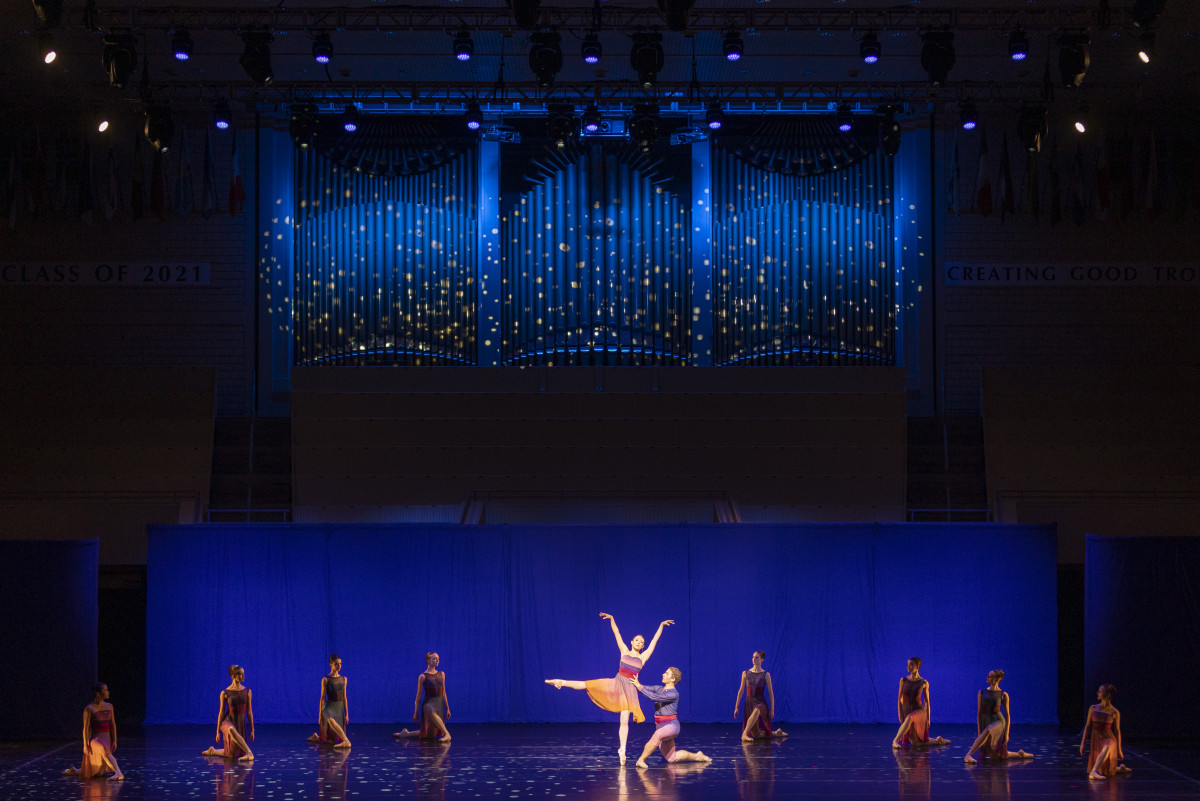
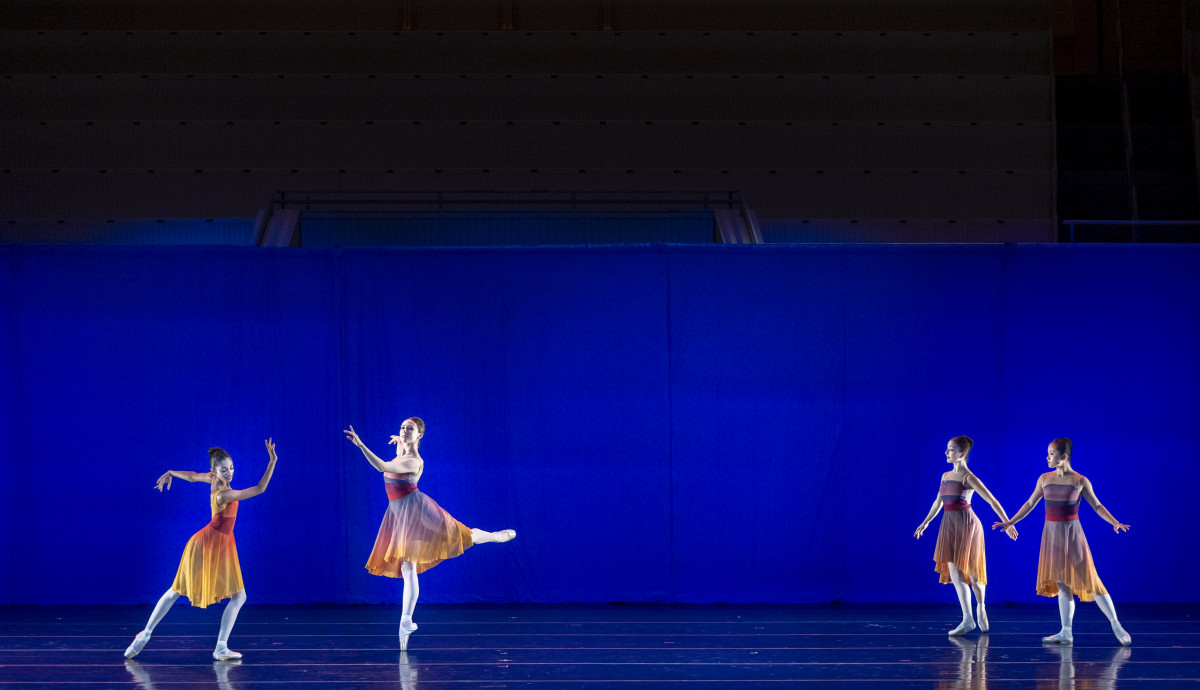
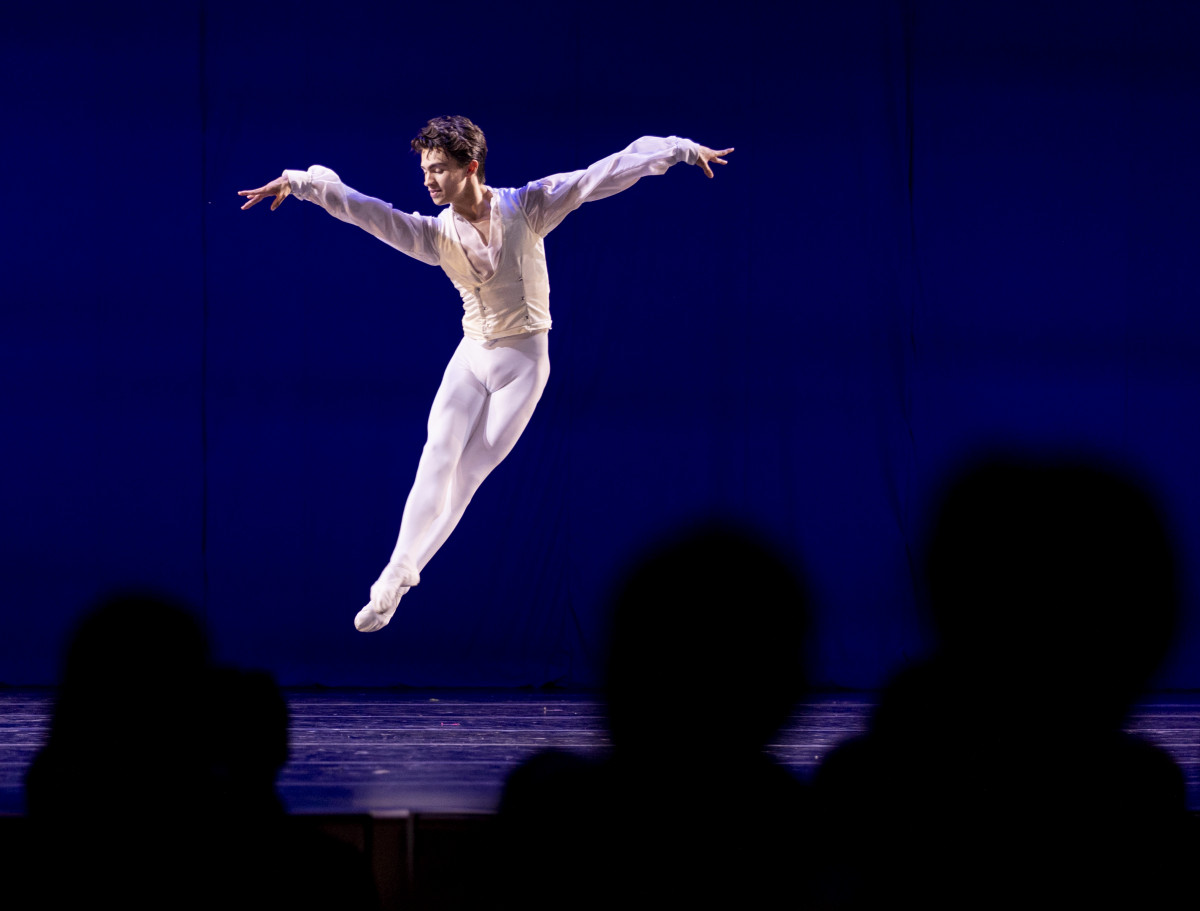
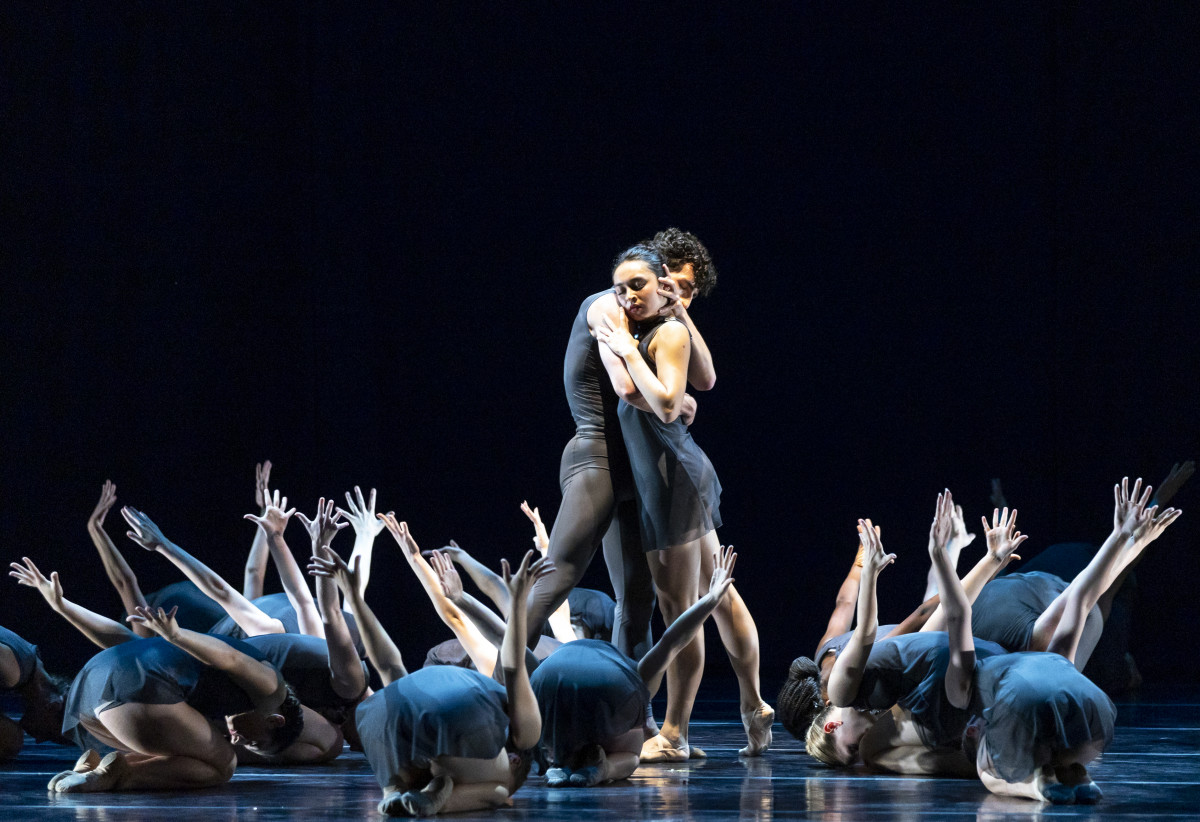
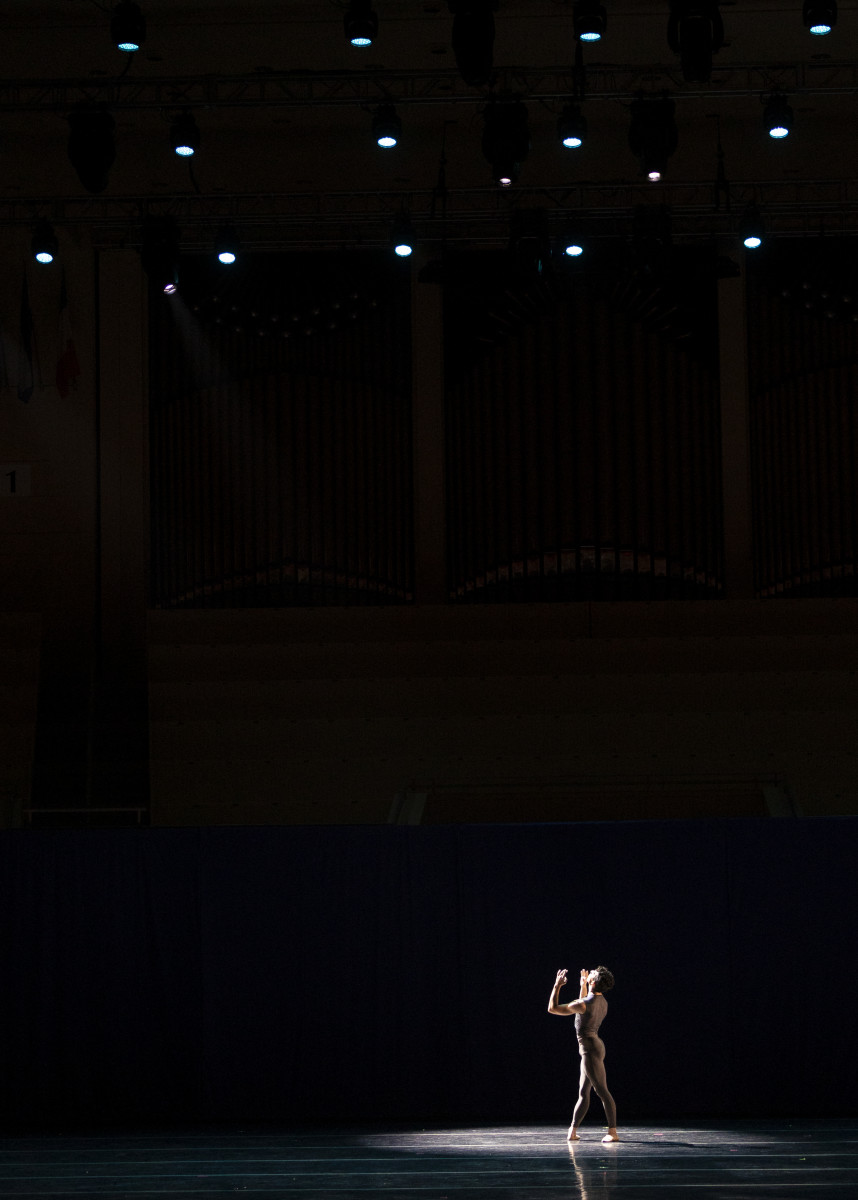
KRISTEN TRIPLETT – STAFF PHOTOGRAPHER
Chautauqua is a community that values enriching life through learning and opening audiences up to new ideas and experiences. One way Chautauquans accomplish this is by visiting the theater. But how did the seven young conservatory actors with the Chautauqua Theater Company come away from their time on the grounds? What were the experiences that shaped and enriched their lives this summer? Through a portrait series in Bratton Theater — which, due to COVID-19 safety regulations, was used solely as a rehearsal space for this season’s shows — these actors opened up about their experiences in Chautauqua, their goals for the future and how they’ll take the lessons they learned here into their professional lives.
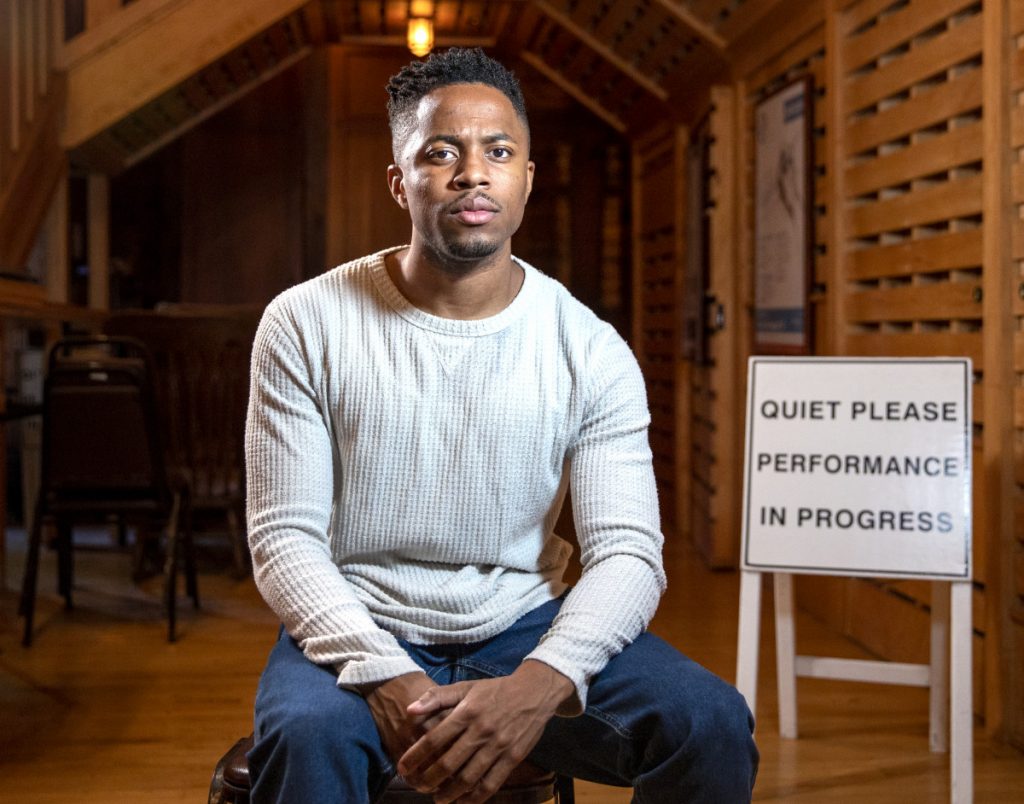
Christopher Portley attends Case Western Reserve University, where he is a rising junior in their Cleveland Playhouse master of fine arts acting program. After seeing his first play at a young age, he fell in love with the idea of acting, but “being from the South, and being from Texas, (acting) wasn’t the cool thing to do. So naturally, I kind of fought that urge.” His love for acting, however, overpowered any fear of not being “cool,” so he began acting in high school. “I love watching old movies, any type of movies, TV shows. I just love all of it. It keeps me inspired just to see the people who came before me, to see their trajectory and be inspired by their work and their storytelling.”
As far as his time in Chautauqua, Portley said he’s “discovered that there’s a lot inside that I have to give and to share, and to trust it. That I don’t need permission from anyone to share that other than myself.” As he looks ahead to his goals for the next 10 years, Portley wants to perform in a Broadway show and to act in his first TV show or film. Separate from that, he always wants to find a way to give back to the next generation “whether I’m speaking to young audiences, or to that 14-year-old boy that thinks that it’s not ‘cool’ or possible, I want to give back in whatever way I can.”
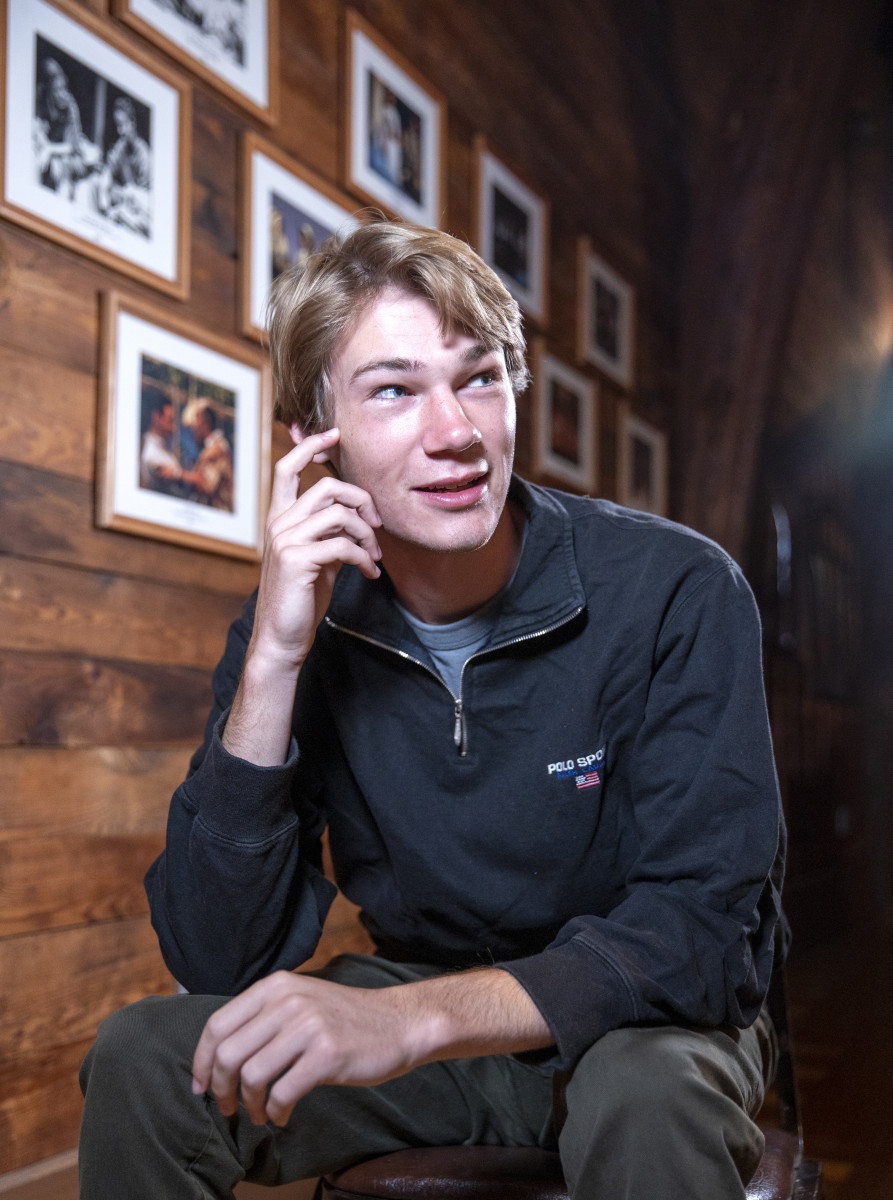
At just 20 years old, Walker Borba is going into his junior year as a theater major at Kenyon College. “Being younger than everybody else, I always wondered what the professional theater space was like. It’s been nice to be a part of a professional space with people who are in graduate programs and who are very serious, talented actors, and to not feel completely out of my depth. … So that’s been a super-cool feeling to be like, no, this is something I can feel confident at and that I could actually do if I wanted to.”
Besides finishing college, Borba’s big goals for the next 10 years span farther than just acting. “I would love to create some piece of entertainment where I have broad creative say in the direction and the writing of said piece, and maybe the performance. I’d love to do more directing, more writing and just to continue to act in things that I think are challenging and rewarding.”

Daphne Kinard is going into her second year at Columbia University’s master of fine arts acting program. Kinard has been acting for a long time, but this summer she finally had the time to explore what works for her as an actor. “What’s my technique? Who am I as an actor? What do I bring that other people don’t? I really felt encouraged and completely safe here to just explore what works for me.” She’s also learned a lot from her characters, from playing Asha in Blood at the Root to more light-hearted characters like Madame Pantalone and Tartaglia in Commedia, adding new pieces to her repertoire. As far as the next 10 years go, Kinard has big plans.
“I hope to get famous in the next 10 years. I think that that’s a good timeline to get famous. … A nice off-Broadway gig or a nice recurring role on a TV show out of school is the dream. … I just want to keep working up to continue being the little fish in the big pond. Every time I feel like, ‘Oh, I’ve got this,’ I want to put myself in a new arena to challenge myself.”
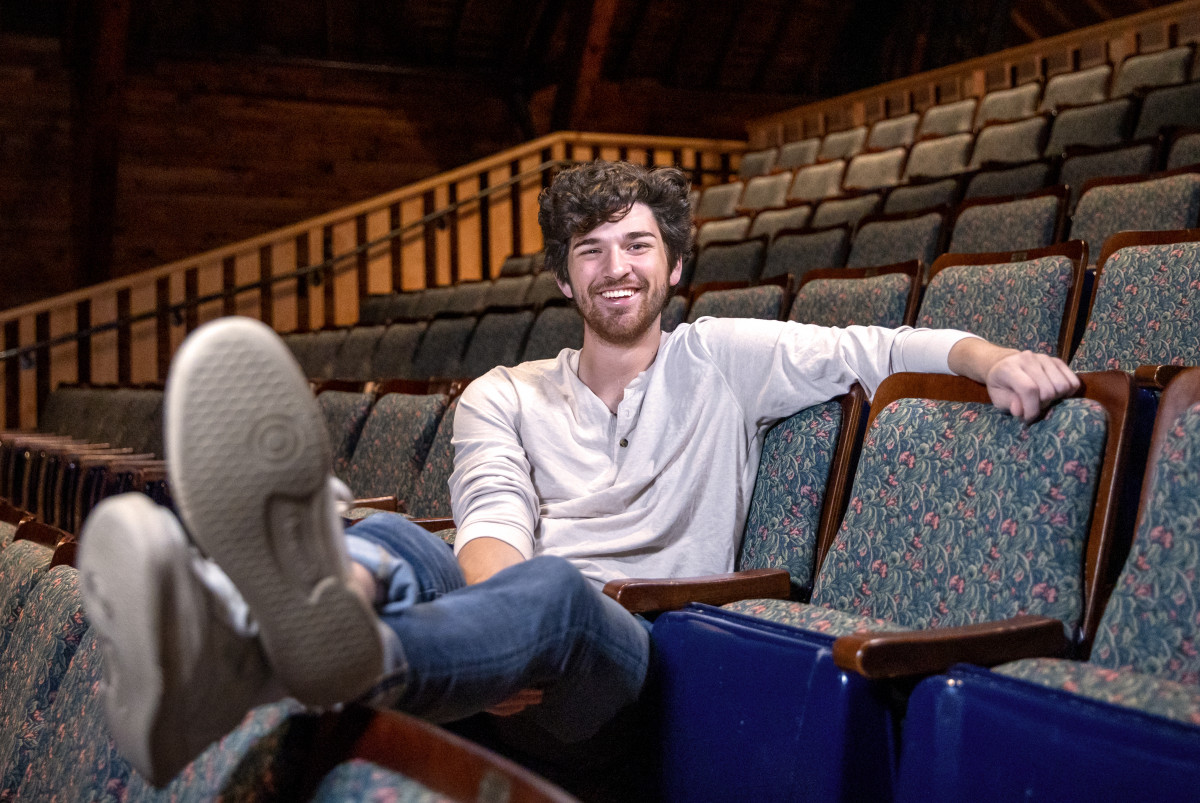
Justin Von Stein just finished his undergraduate degree at the University of Tennessee at Knoxville, where he was a theater major. Von Stein was always involved in drama clubs and acting.
“I’ve done other things, I’ve tried other things but nothing fills me up inside as much as acting does,” he said.
He’s felt that he’s done great theater at Chautauqua and being on the threshold of moving forward — whether that be to grad school or further out into the professional world — this is Von Stein’s moment where he feels his career as an actor has really become serious. Von Stein has humble goals for the next 10 years: “I’m going to try not to starve,” he said, “but really I just want to find success in this career, in this business, in this thing that I love to do. Success is not seeing my name on movie posters or anything — although that would be awesome — it’s just, you know, making enough money to survive doing this career path as an actor, for as long as it continues to fulfill me like it does.”
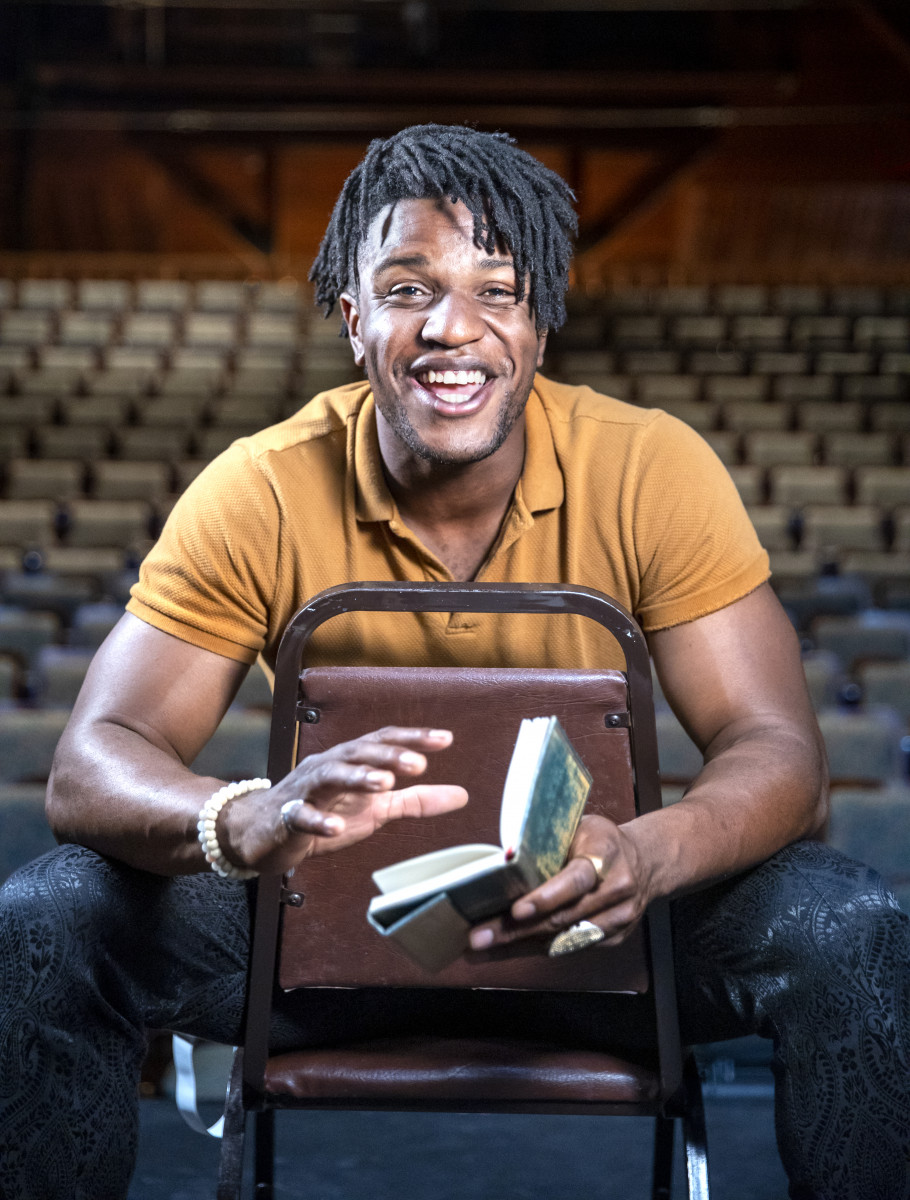
Malachi Beasley is a junior at the School of Drama at Yale University. His experiences as an athlete and from his time serving in the military shape how he approaches both life and acting. “(As an actor), I’m serving in a totally different way than I was in the military, which was just to protect. This role is to lift up and show people’s truths. So really, every day feels inspirational, because I’m around everyday people. Watching people live their lives is just so inspiring and listening to certain conversations gives me motivation to tell those people’s truth. And I really like to find the nuance in every character that I’m given so that then people can see themselves reflected back at them.” As far as his future goals, Beasley is confident that Chautauquans will see him on TV, in films and on Broadway. His main priority, however, is to be healthy, both mentally and physically. “I want to be mentally at a place where I feel like I could sustain myself and not be overworking. I don’t want to outwork myself; I want to work smarter, not harder. … I feel like I trust myself to know that I will go in the direction that my career has for me. But really, I just want to live a fruitful life.”
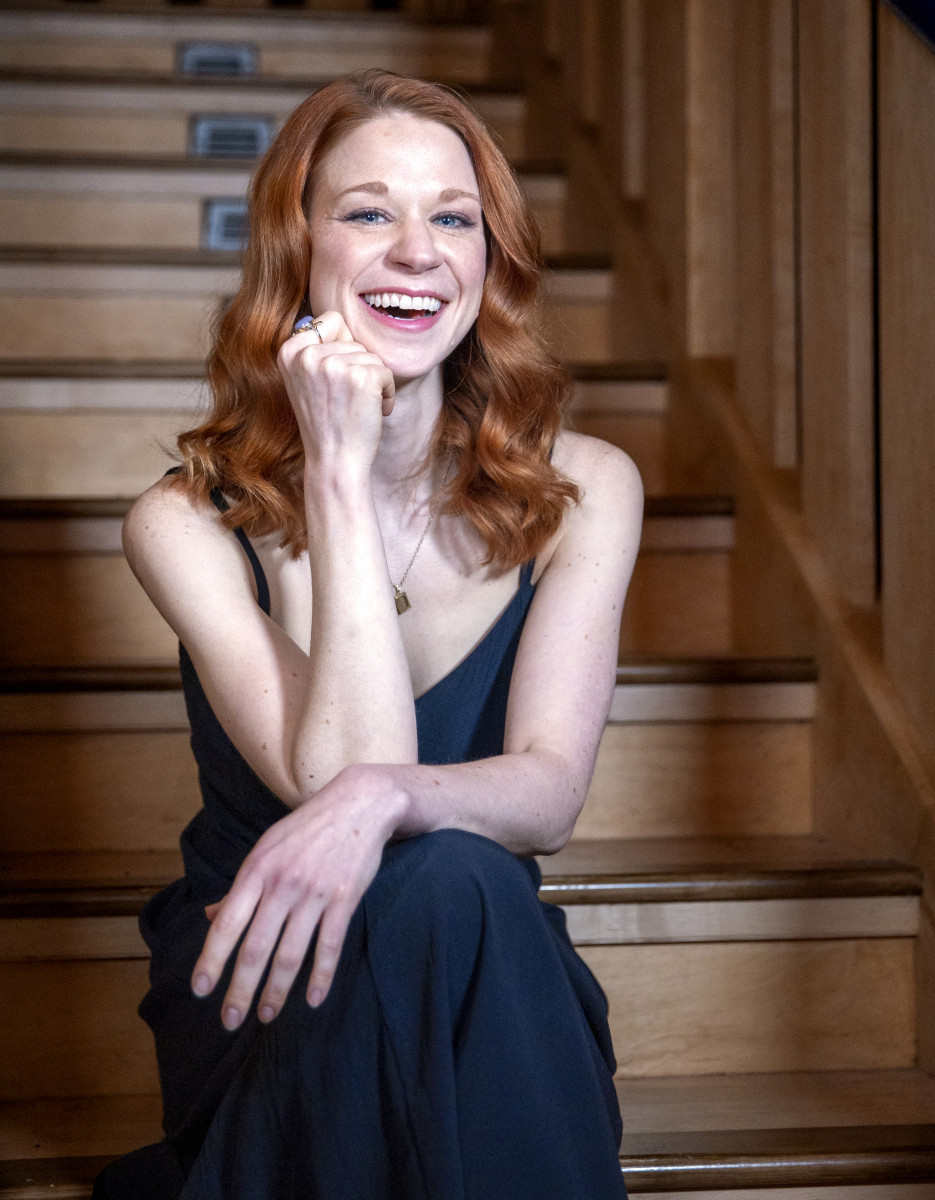
Rachael Fox is going into her fourth year of her acting master of fine arts at University of Illinois at Champaign-Urbana. She described her time in Chautauqua playing characters like strong-willed high school journalist Toria in Blood at the Root to mischievous and hungry Arlecchino in the improv show Commedia as “a wonderful, weird and wild ride of making theater with some rad artists.” Fox has her near future all planned out, with a few specific goals in mind: “I’m moving back to New York next year and would love to work in exciting and imaginatively rich theater and film/TV. I’d love to explore both the classics through new lenses and new works and find an awesome creative community of friends and collaborators to work and make art with. … And someone better cast me as the femme fatale in a new film noir, if they know what’s good for them.”
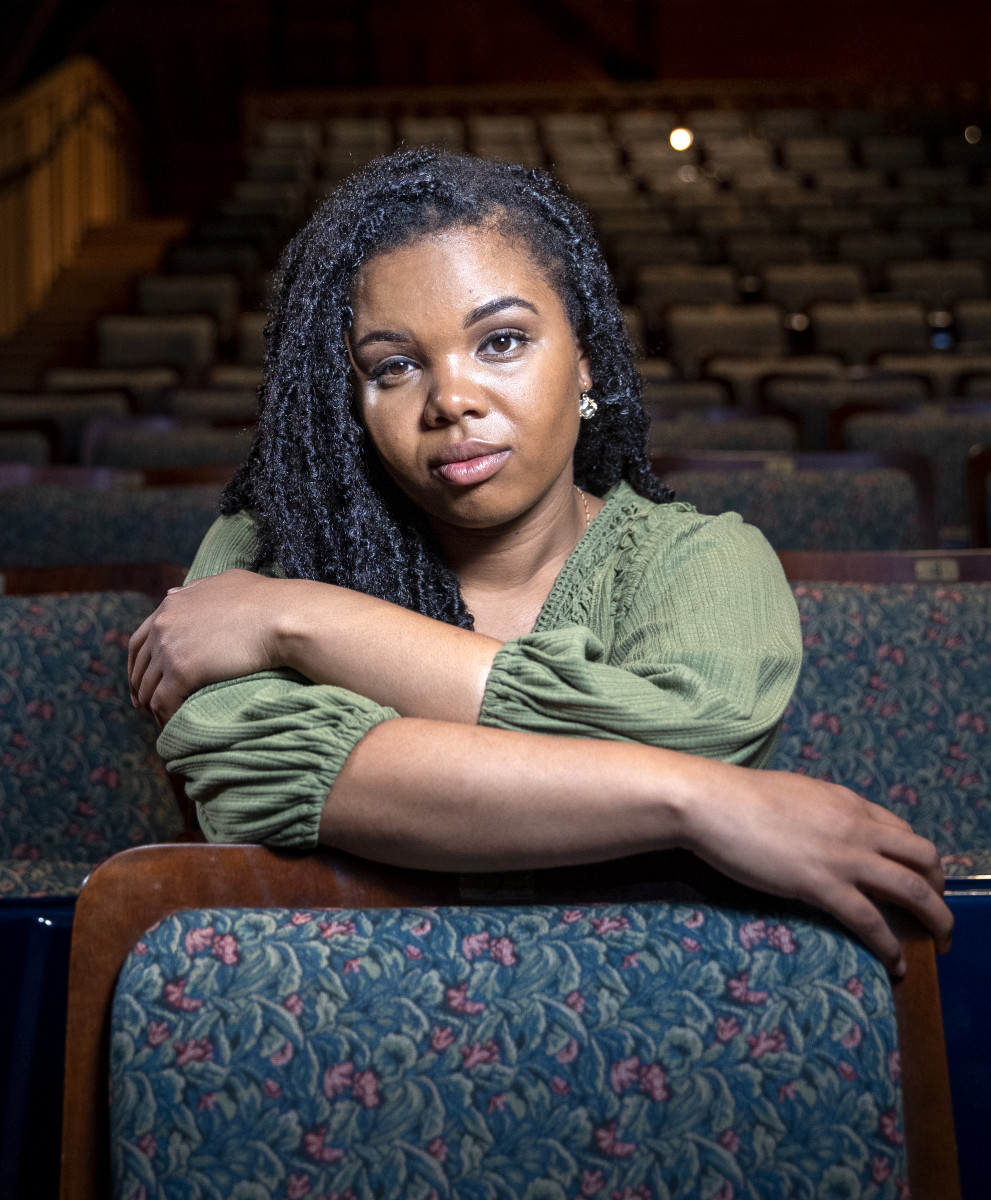
Jada Owens is in her last year of grad school at the University of California, San Diego, where she studies acting. Owens is excited to take what she’s learned here in Chautauqua into her final year of graduate school.
“I have been given such a great and beautiful opportunity to explore three different characters here, one being Raylynn (in Blood at the Root), who is and will always be in my heart, just because she provoked something in me that has caused me to stand proudly in my Blackness. And then also experiencing different facets of my Blackness in Commedia with Isabella and Dottore, has given me the freedom to use language in such a way that it is my own cadence, my own rhythm.” Taking what she’s learned here and going out into the professional world, Owens said her “goal and dream in the next 10 years is to continue to tell stories that will provoke an audience to reflect on the decisions that they have made and the privilege that they have. I want to tell the stories that will continue to make them question what they can do as audience members to change this world for the better. … Alongside all of that, I really want to teach young actors, so that they can feel seen.”
KRISTEN TRIPLETT – STAFF PHOTOGRAPHER
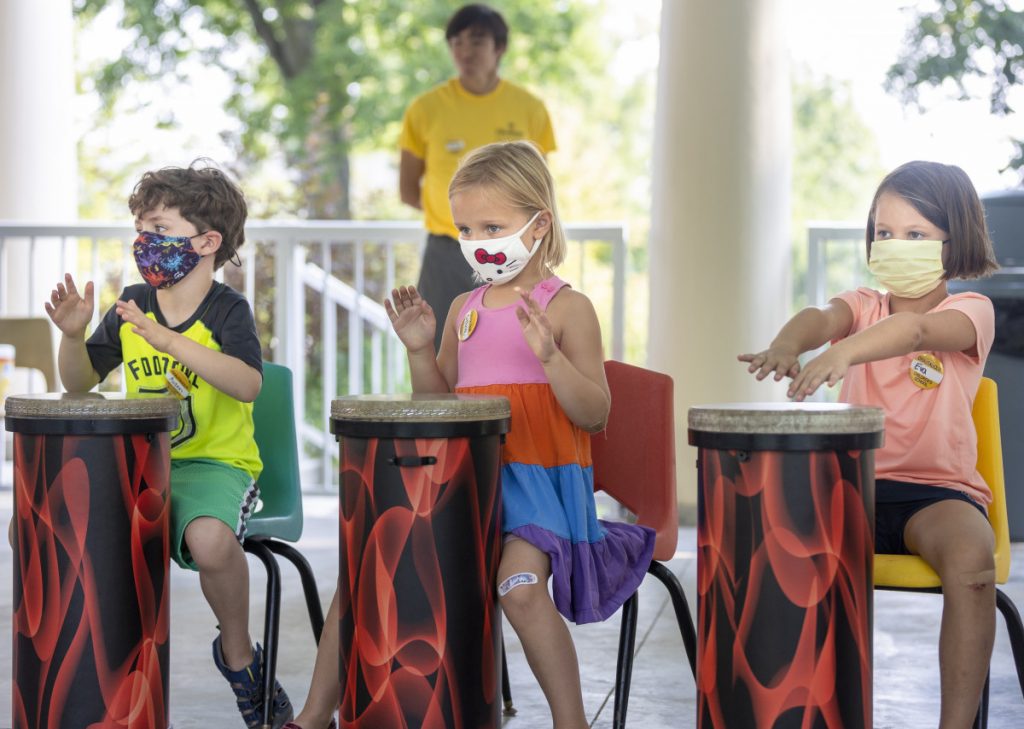
Children’s School students got to drum along to popular music, take turns playing solos, and echo their classmates with call and response on Monday during a drumming class based on the Chautauqua Institution Arts Education School Residency program “Feelin’ the Beat”with Chautauqua’s Director of Arts Education Suzanne Fassett-Wright. For the students it was a chance to make some noise and have a great time, but the lesson is designed for more than just fun.
“Feelin’ the Beat,” a VSA Arts Connect All-Workshop/Residency program provided under contract with the John F. Kennedy Center for the Performing Arts, integrates music learning with social emotional skill development through drumming.
The program is one of Chautauqua Institution’s Art Education school residencies, which are taught in local schools throughout the school year — programs that are supported by the Court Family Endowment, Paul and Marnette Perry, Mark and Patt Suwyn, and David and Nancy Moore. “Feelin’ the Beat” will be back in the classroom after the season as children return to school —online or in person — with a program specially adapted to school needs and safety protocols.
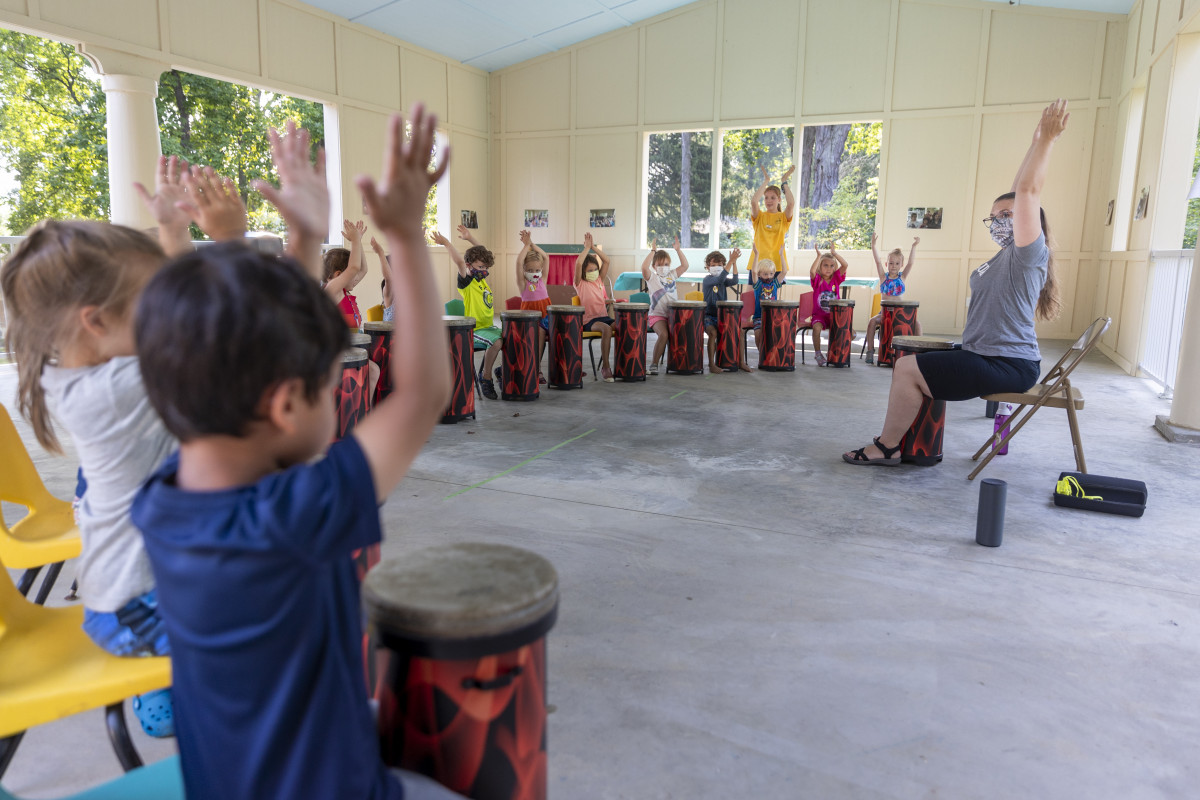

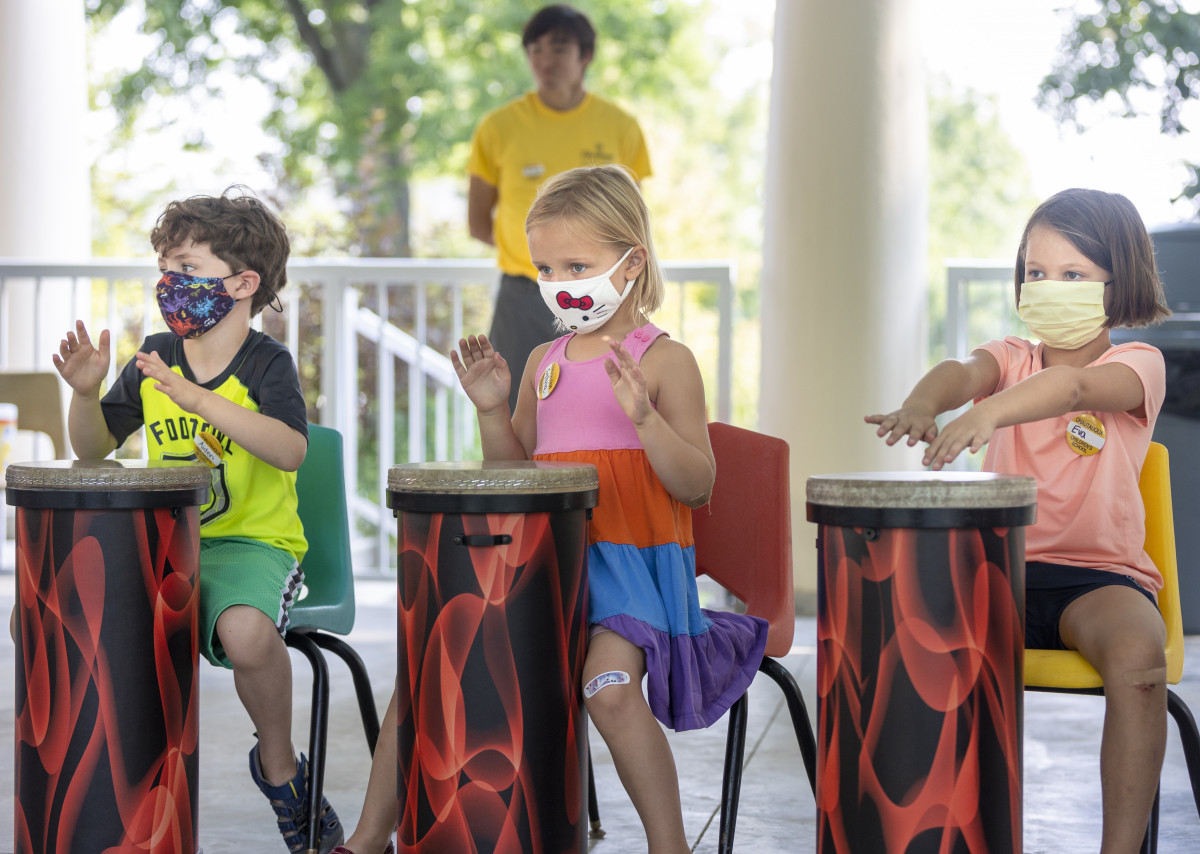

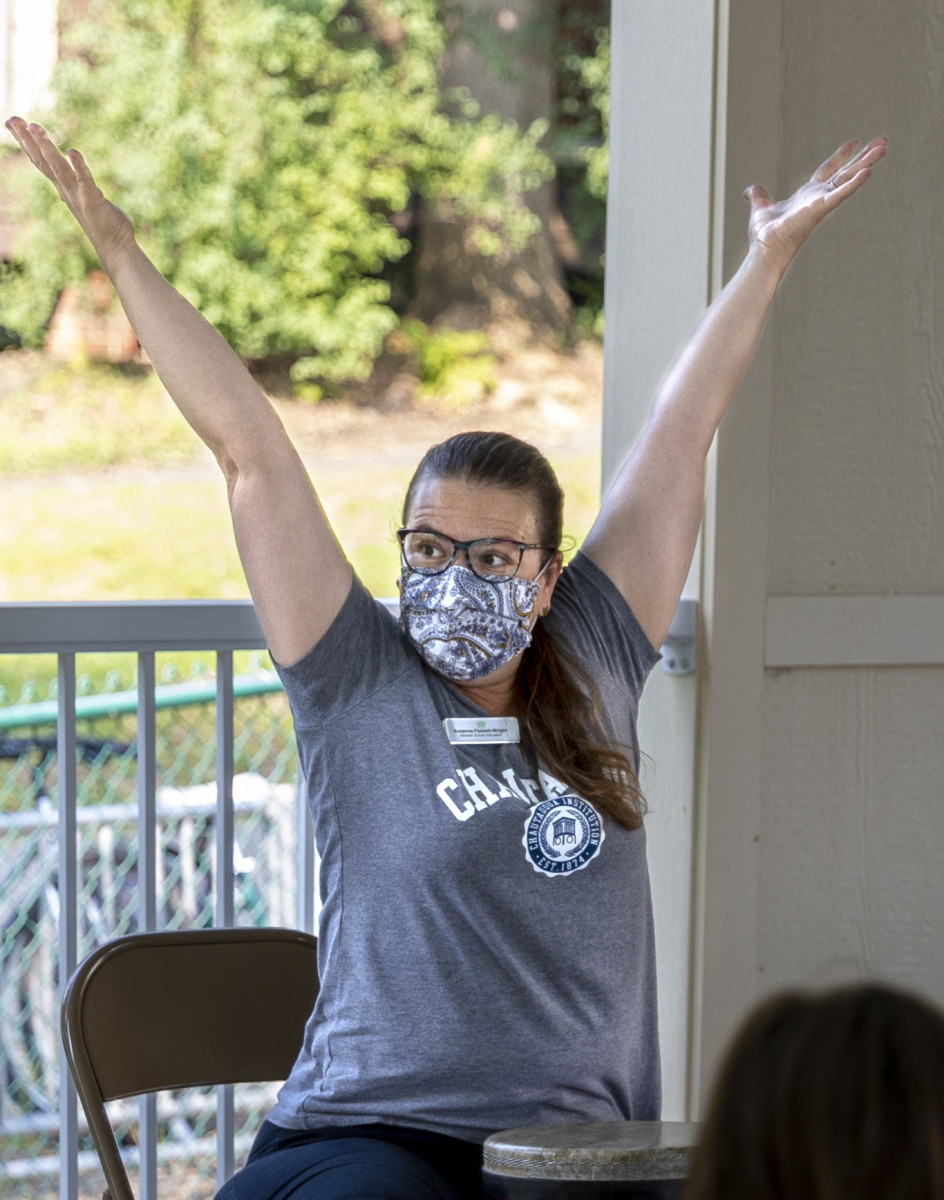
KRISTEN TRIPLETT – STAFF PHOTOGRAPHER
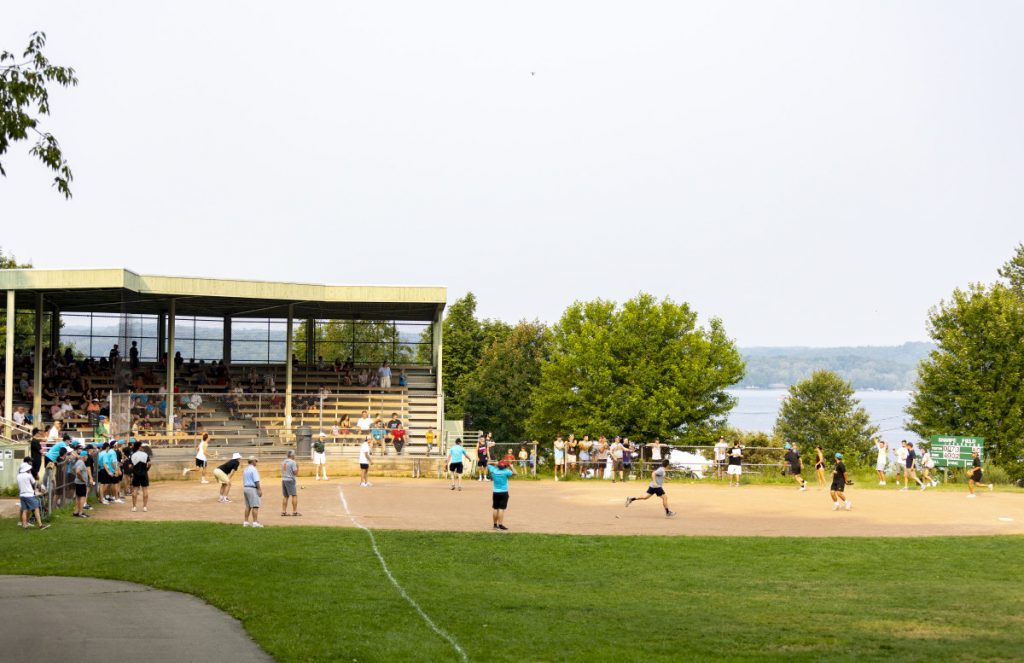
Chautauqua softball is always a competitive affair, but Chautauquans faced a unique challenge Monday: taking on the Jamestown Tarp Skunks, the local franchise of the Perfect Game Collegiate Baseball League. Chautauqua’s finest, dubbed the All Stars, faced the Tarp Skunks in a five-inning exhibition match at Sharpe Field.
The All Stars came out to an early lead, putting up four runs in the first inning, but were ultimately undone by a third inning Tarp Skunks rally. The Tarp Skunks won 11-9.
After the game, members of the community were invited to take a turn at the plate. Young and young-at-heart Chautauquans took their swings (and a few misses) to cap off a memorable afternoon at the ball field.



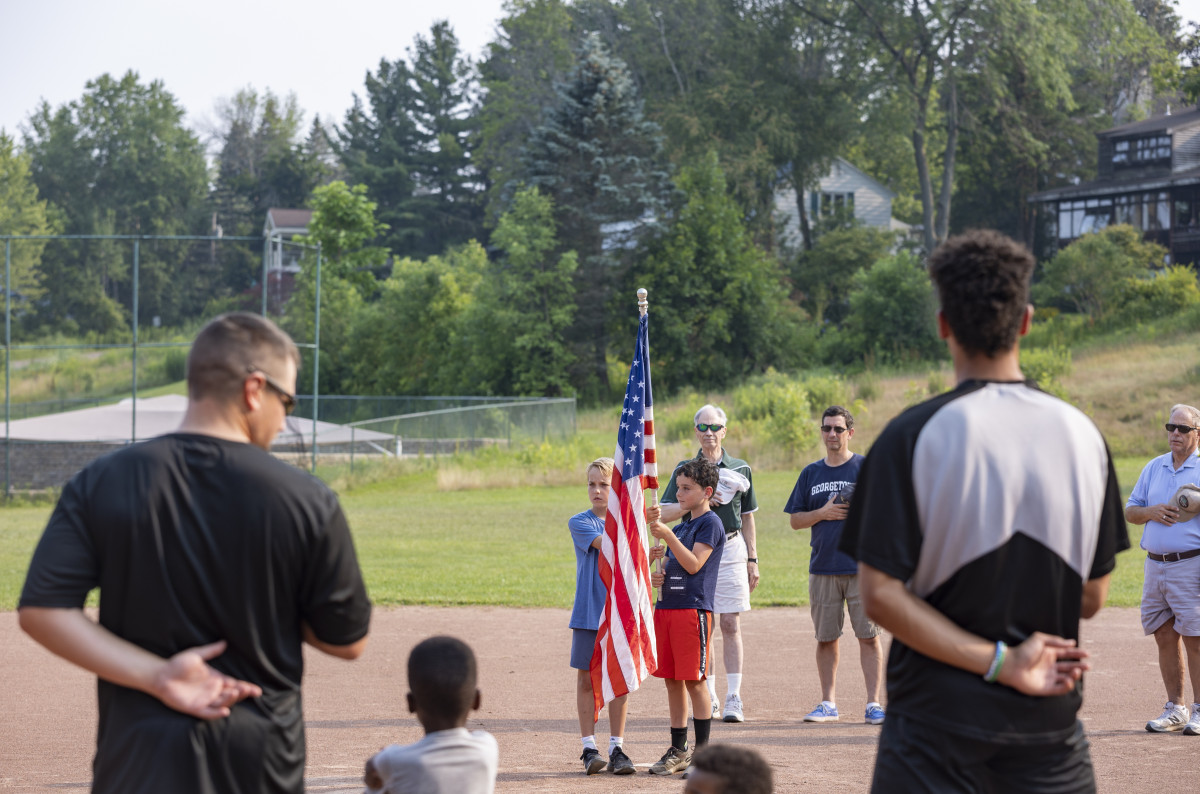
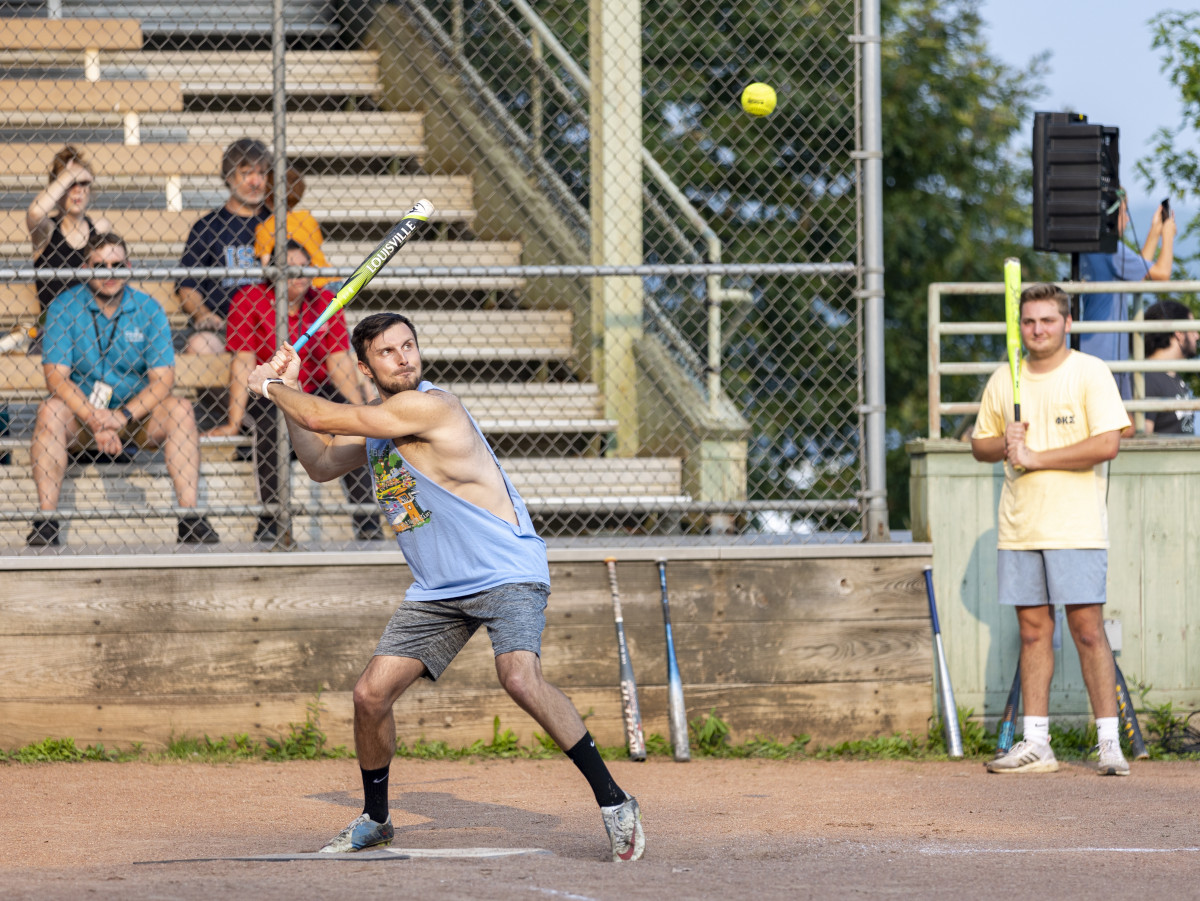
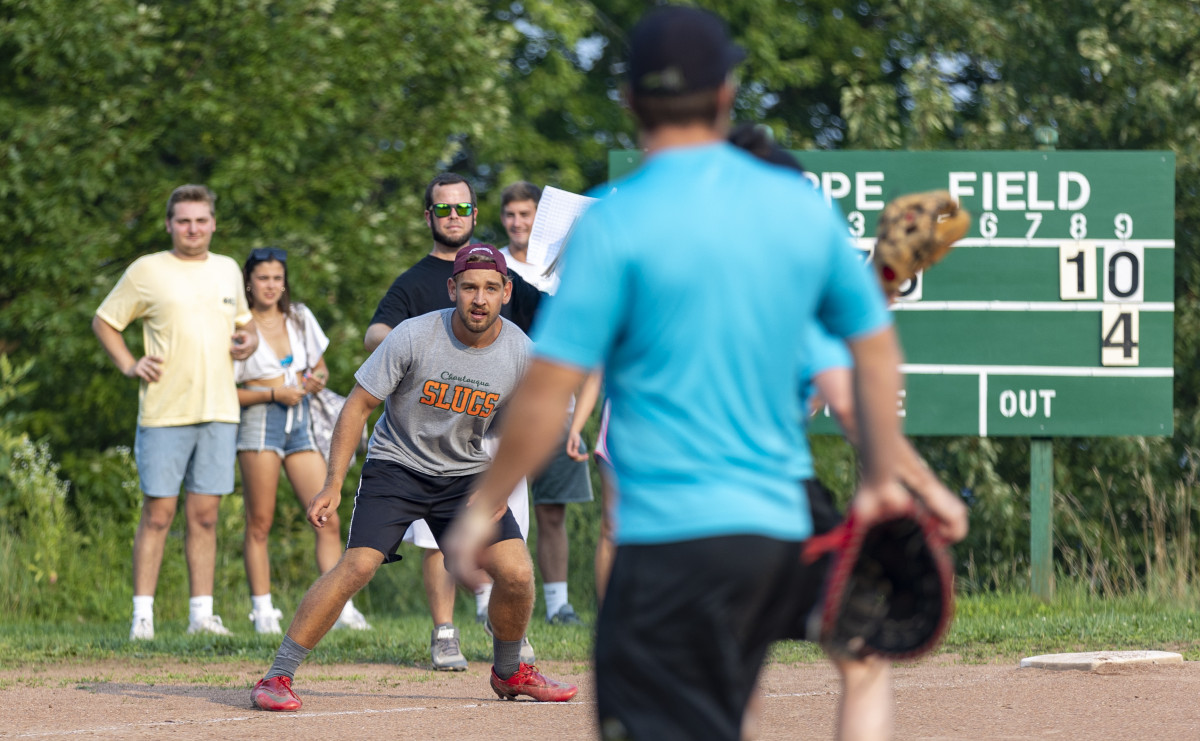
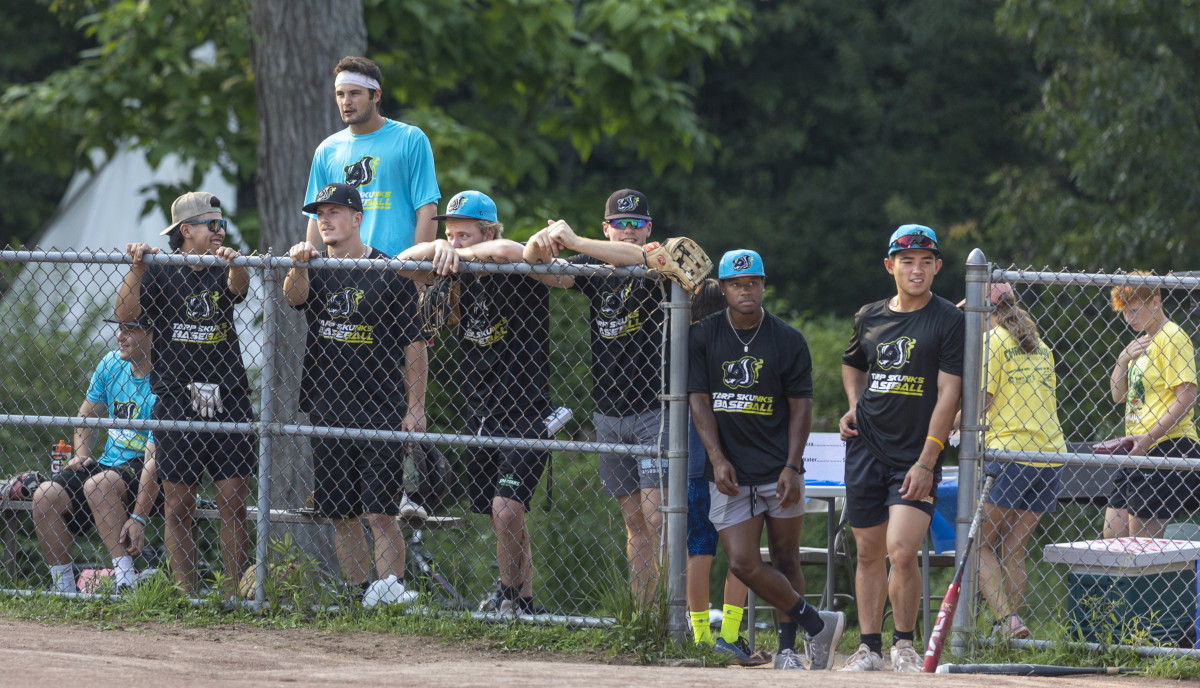



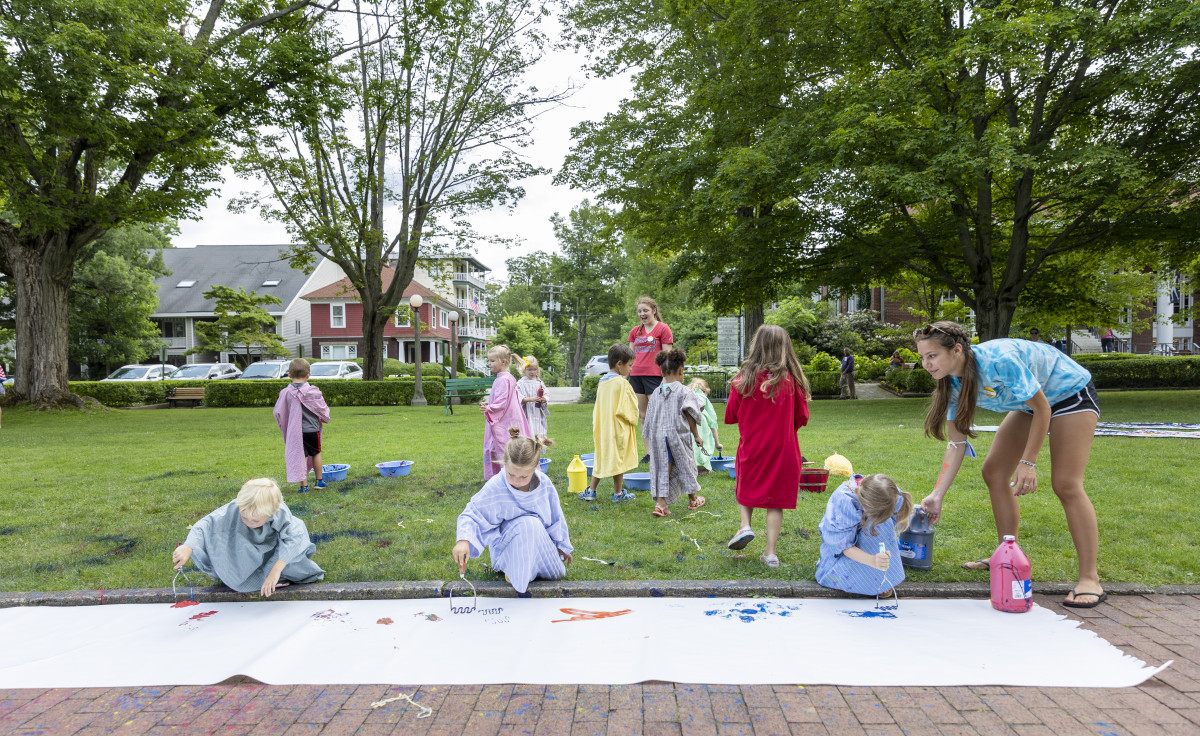
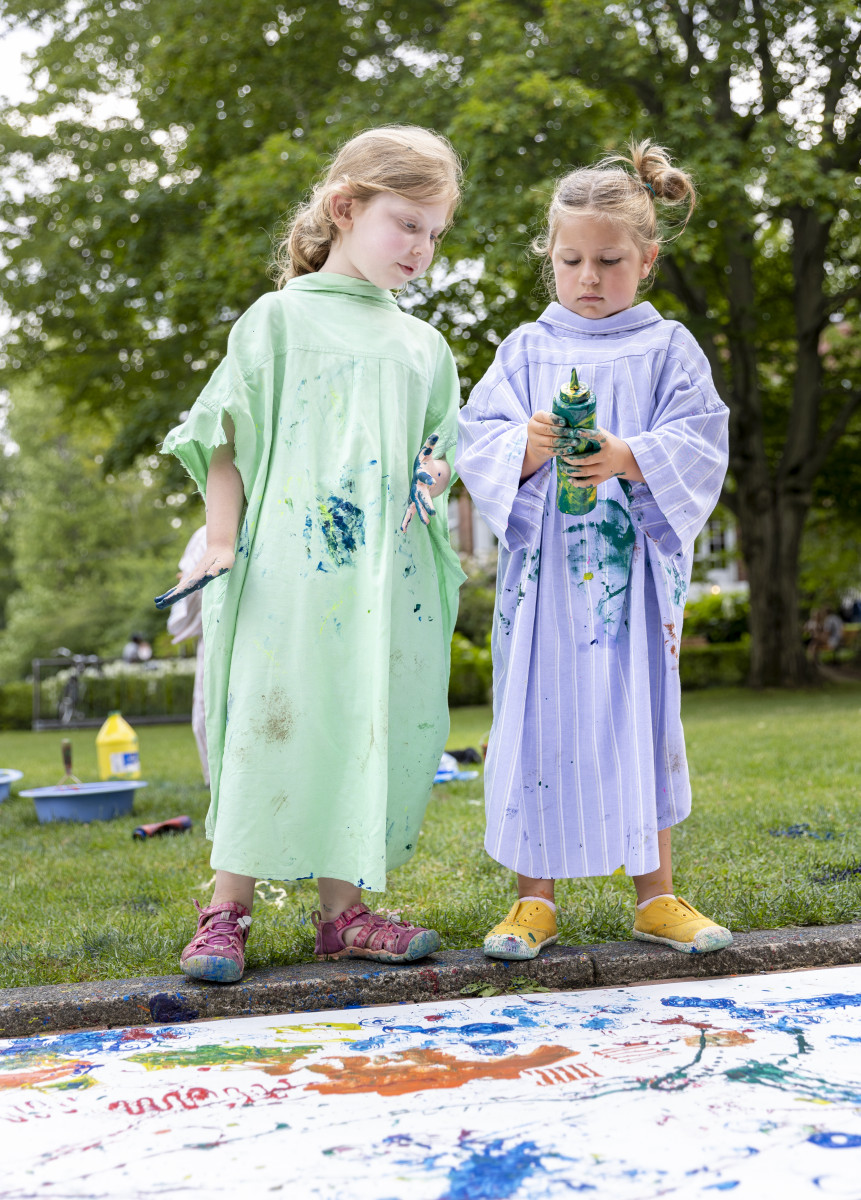
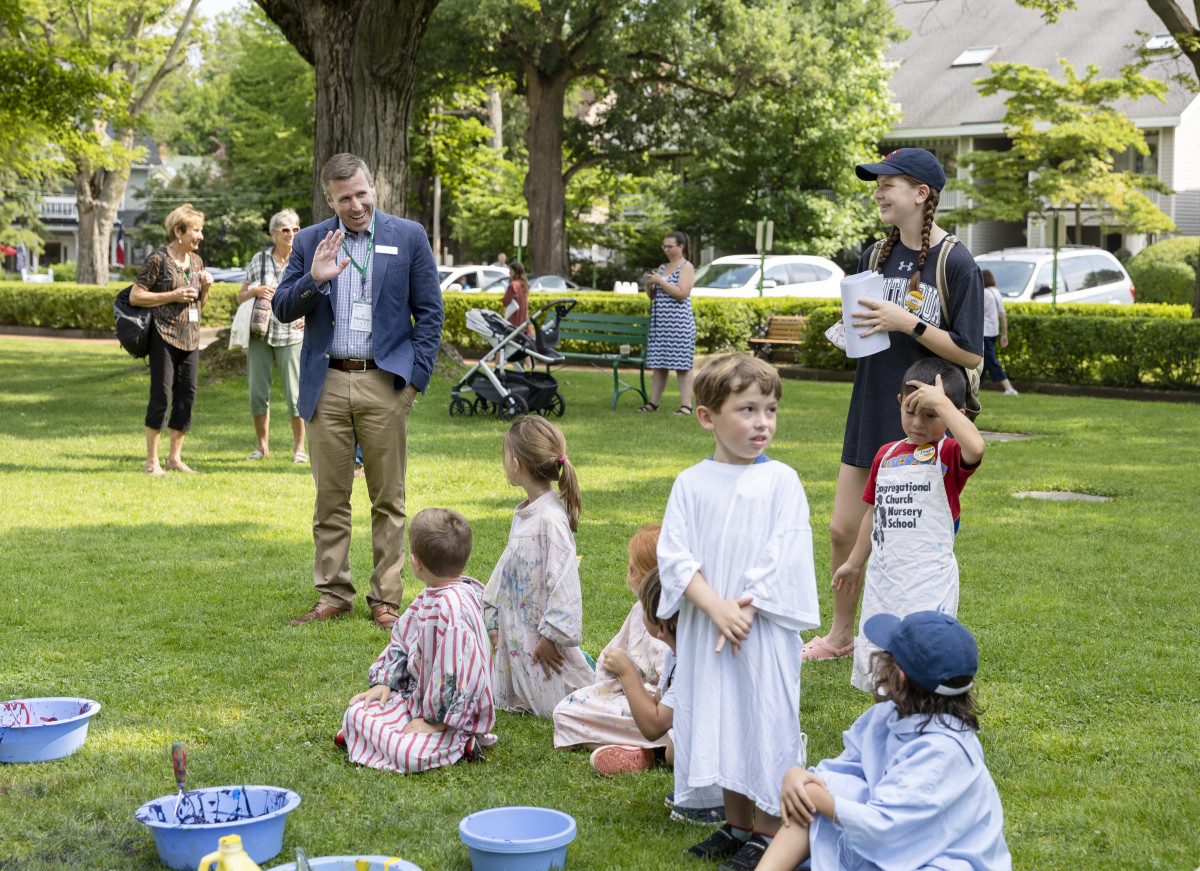
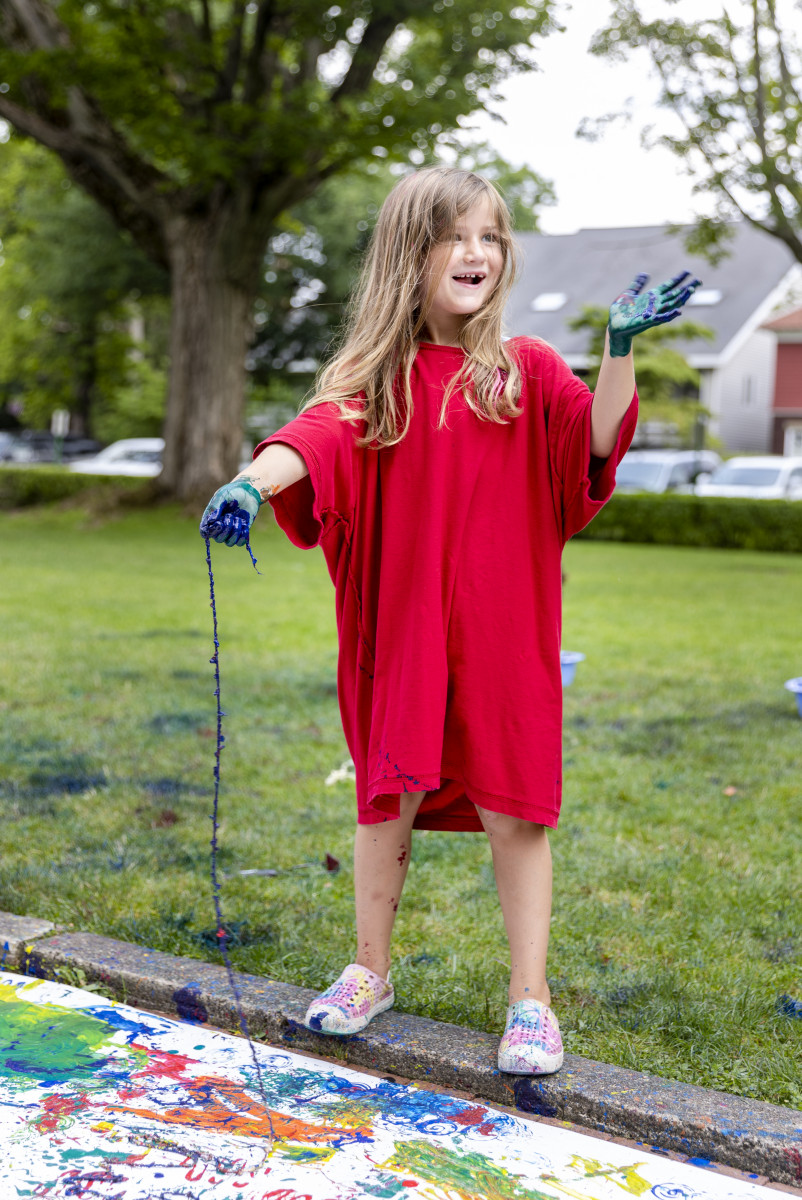

Children’s School Blue Room students paint a large canvas during Art in the Park Thursday on Bestor Plaza. The children, decked out in smocks and oversized shirts, spent the afternoon expressing their creativity on paper and canvas (and the occasional hand, arm, and leg).
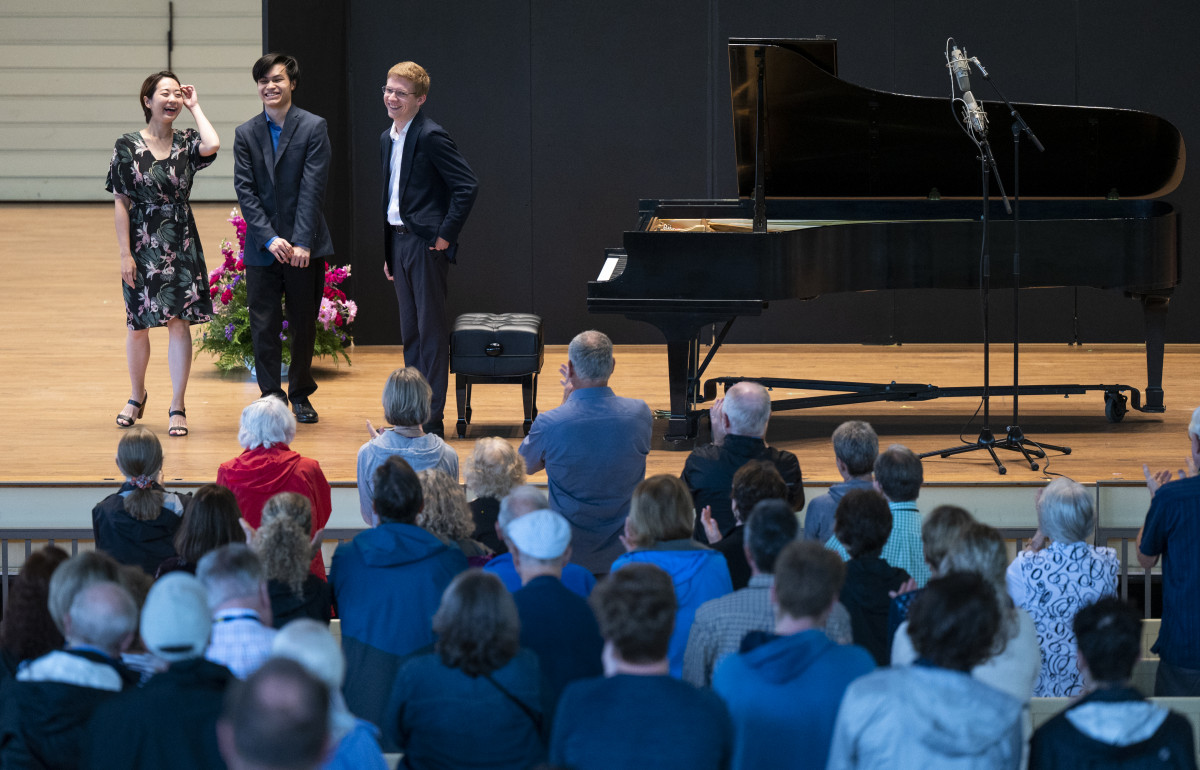
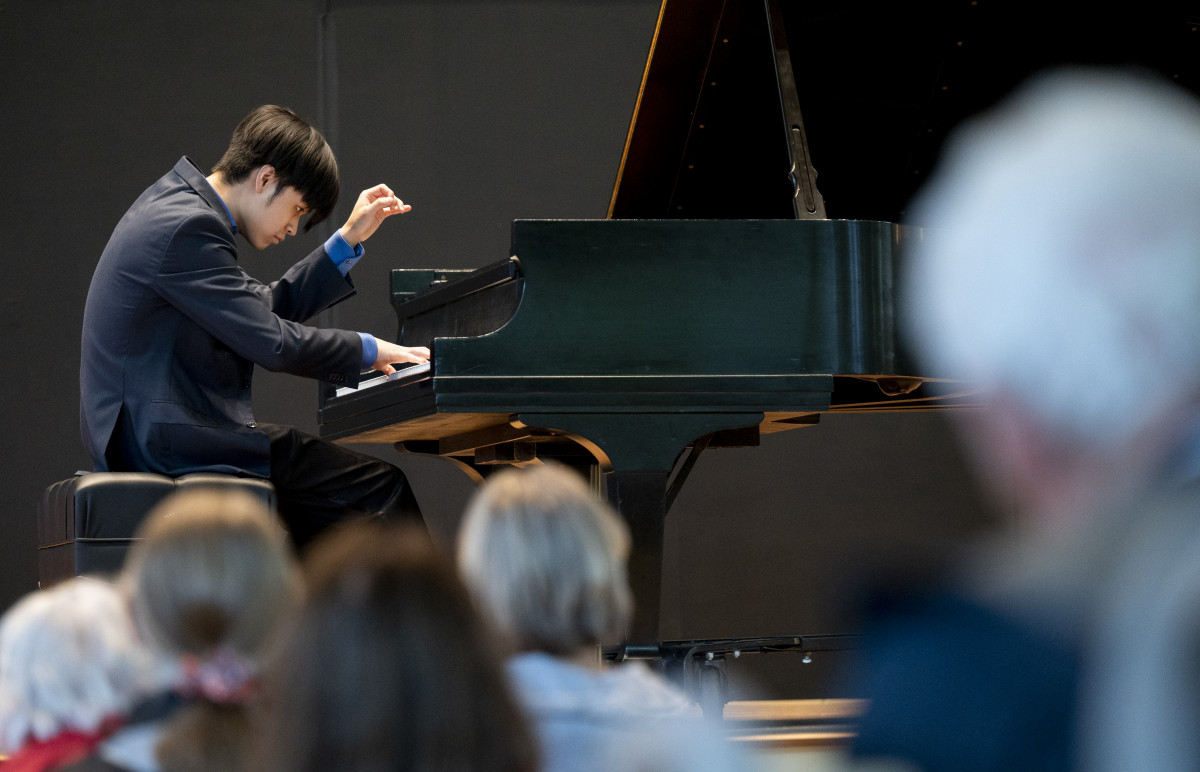
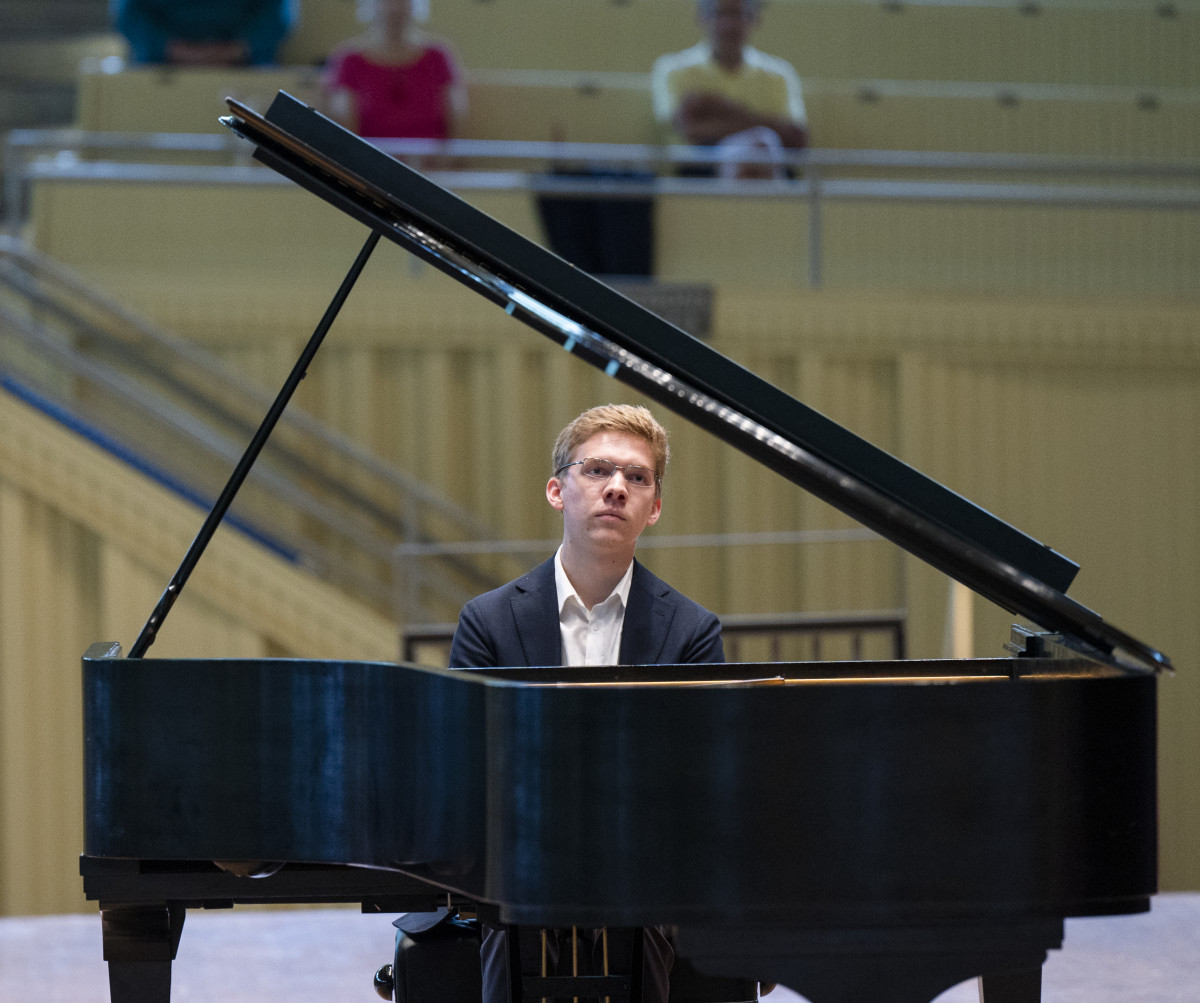
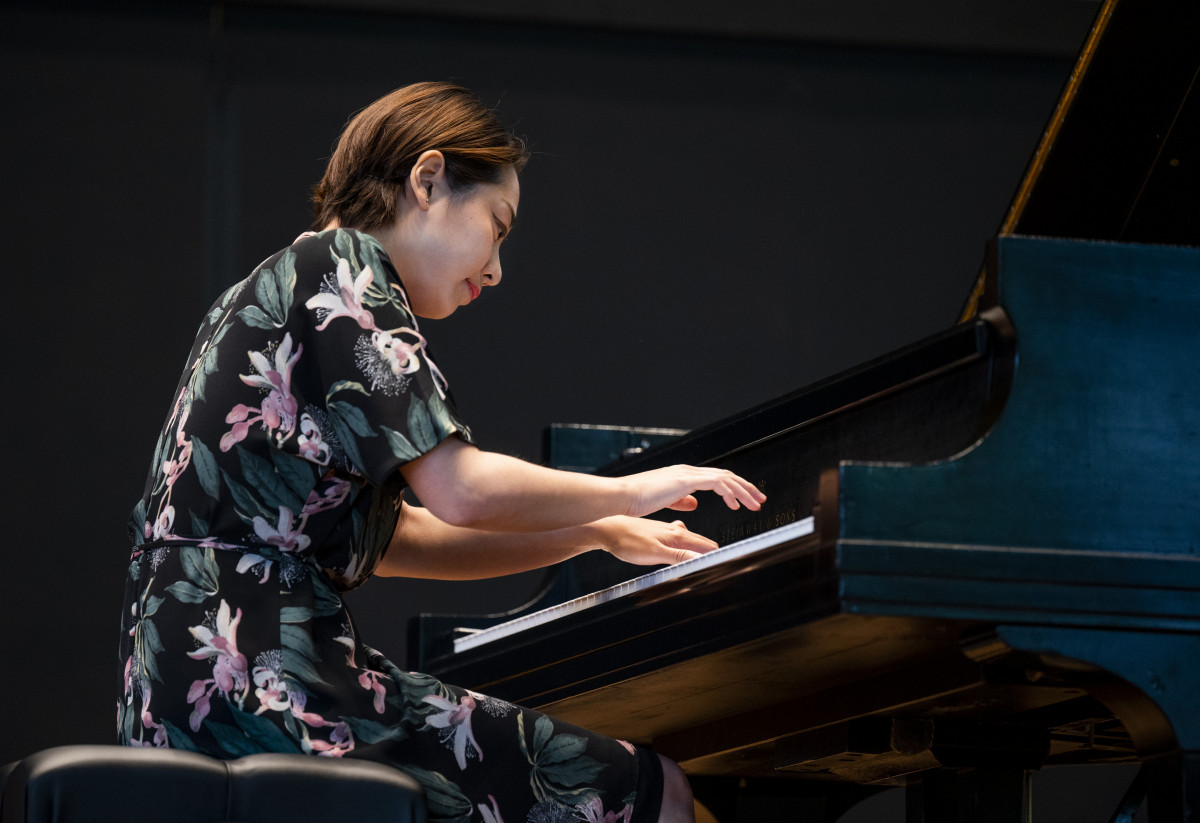
KRISTEN TRIPLETT – STAFF PHOTOGRAPHER
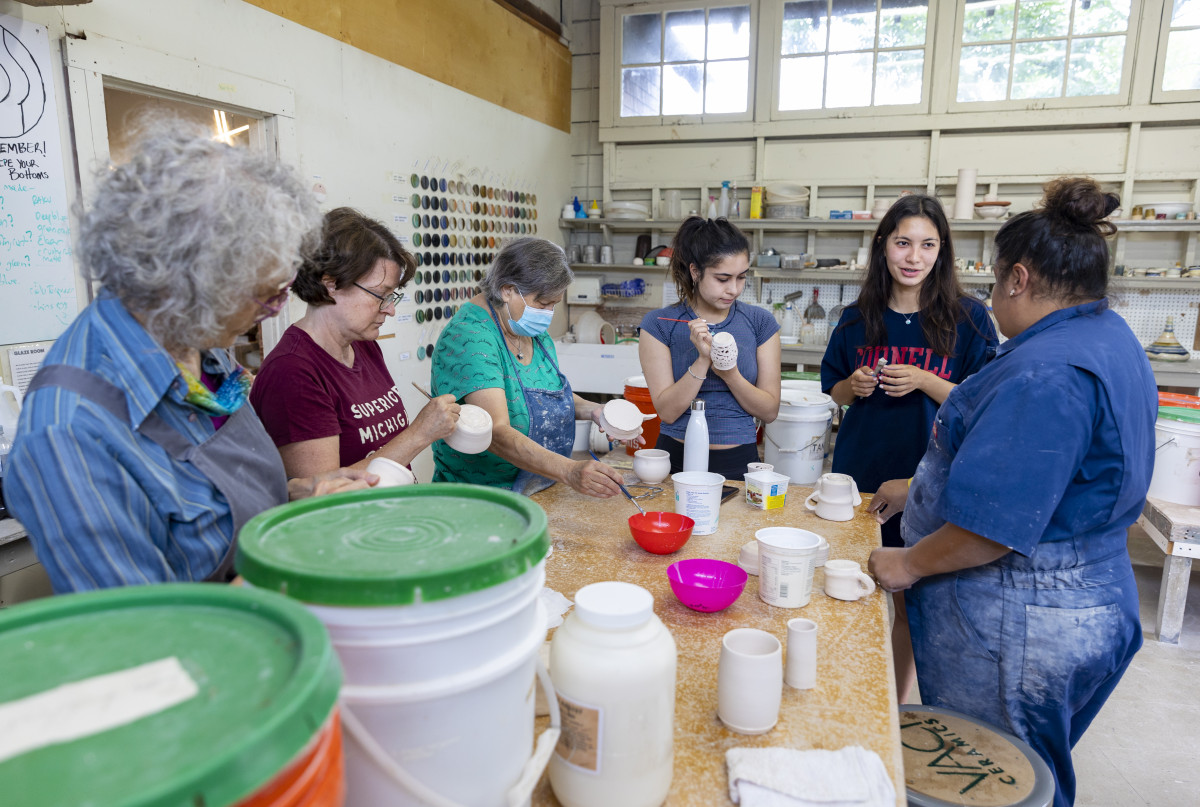
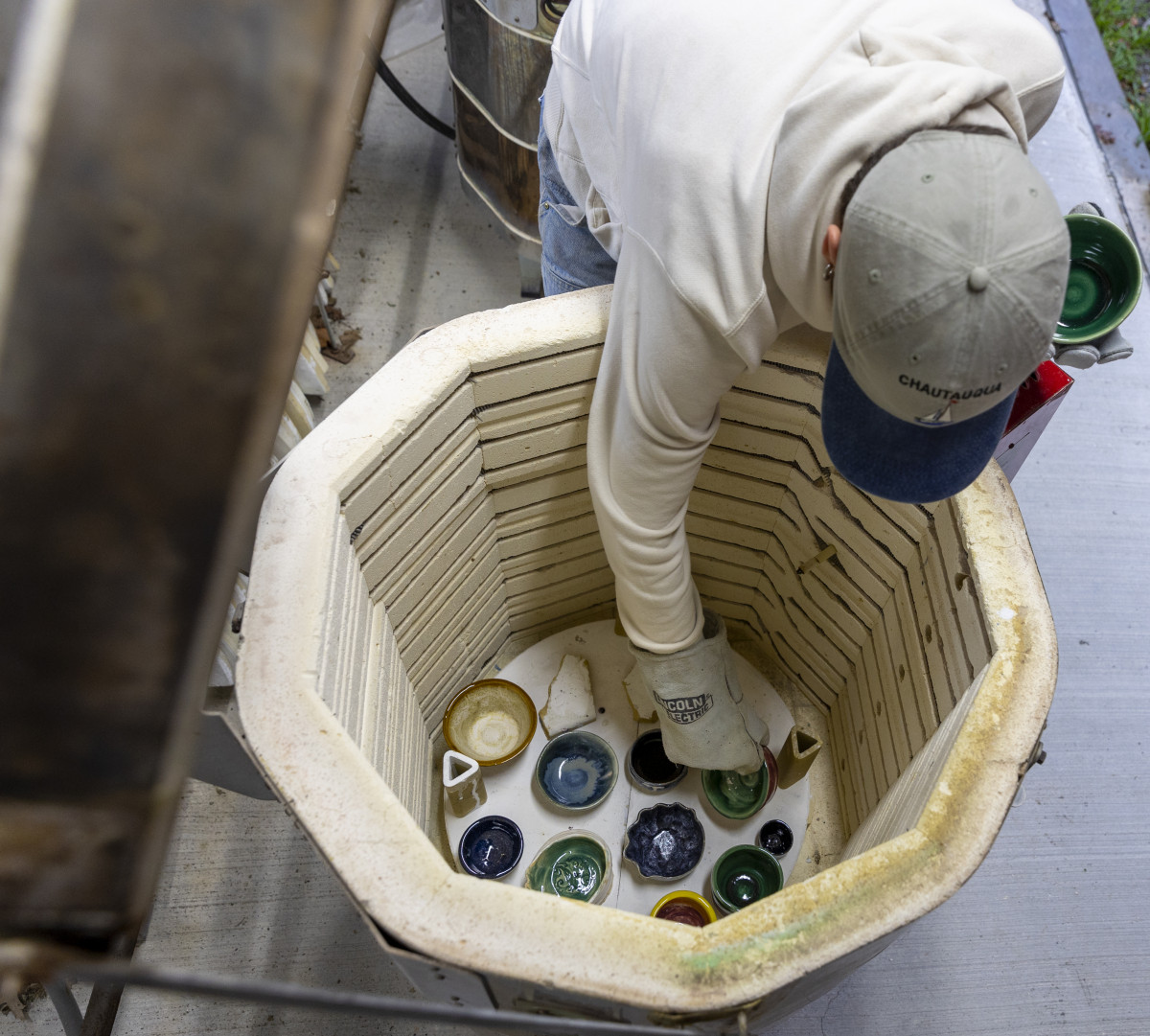
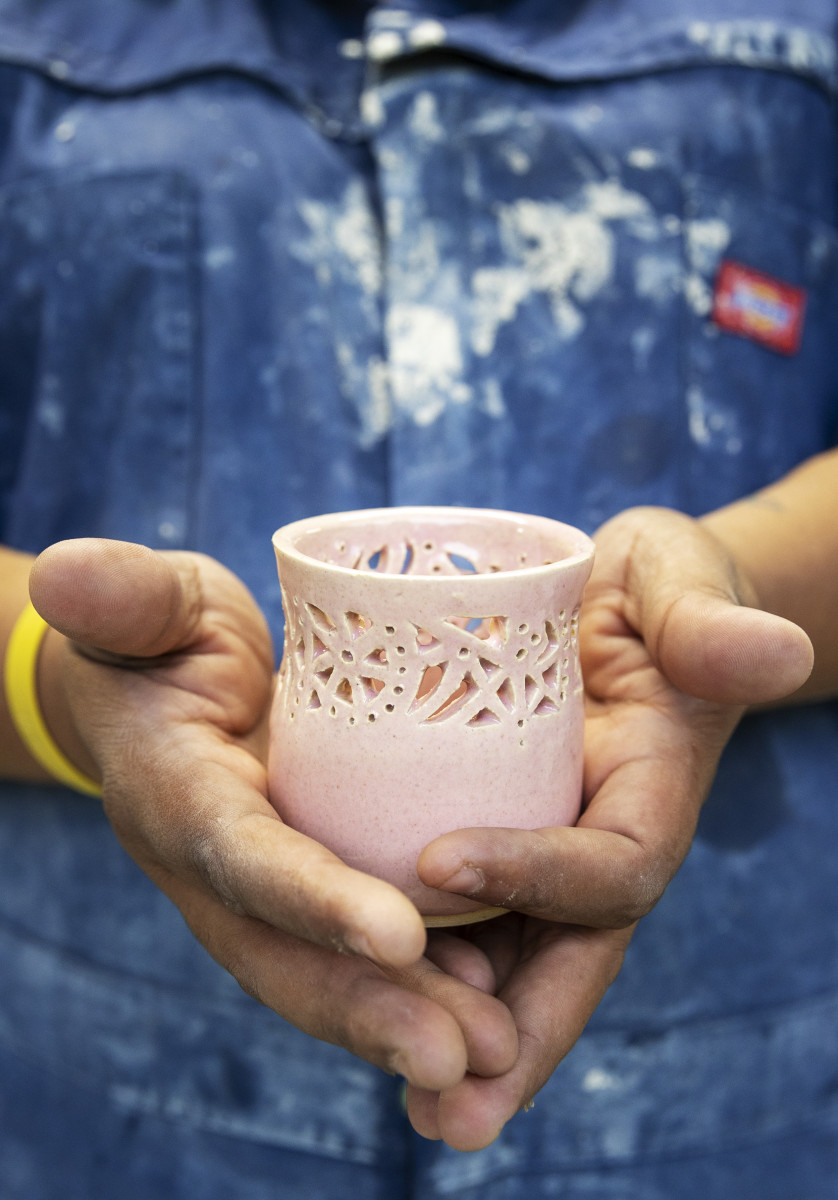
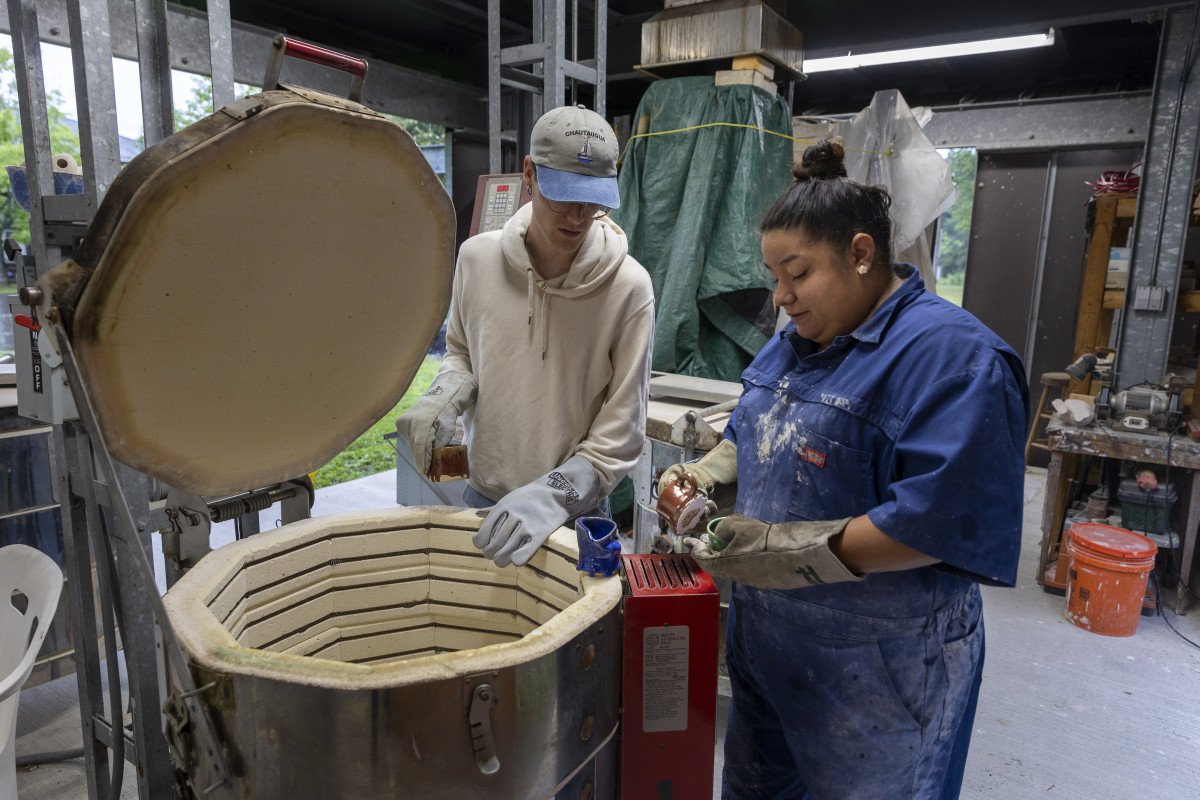
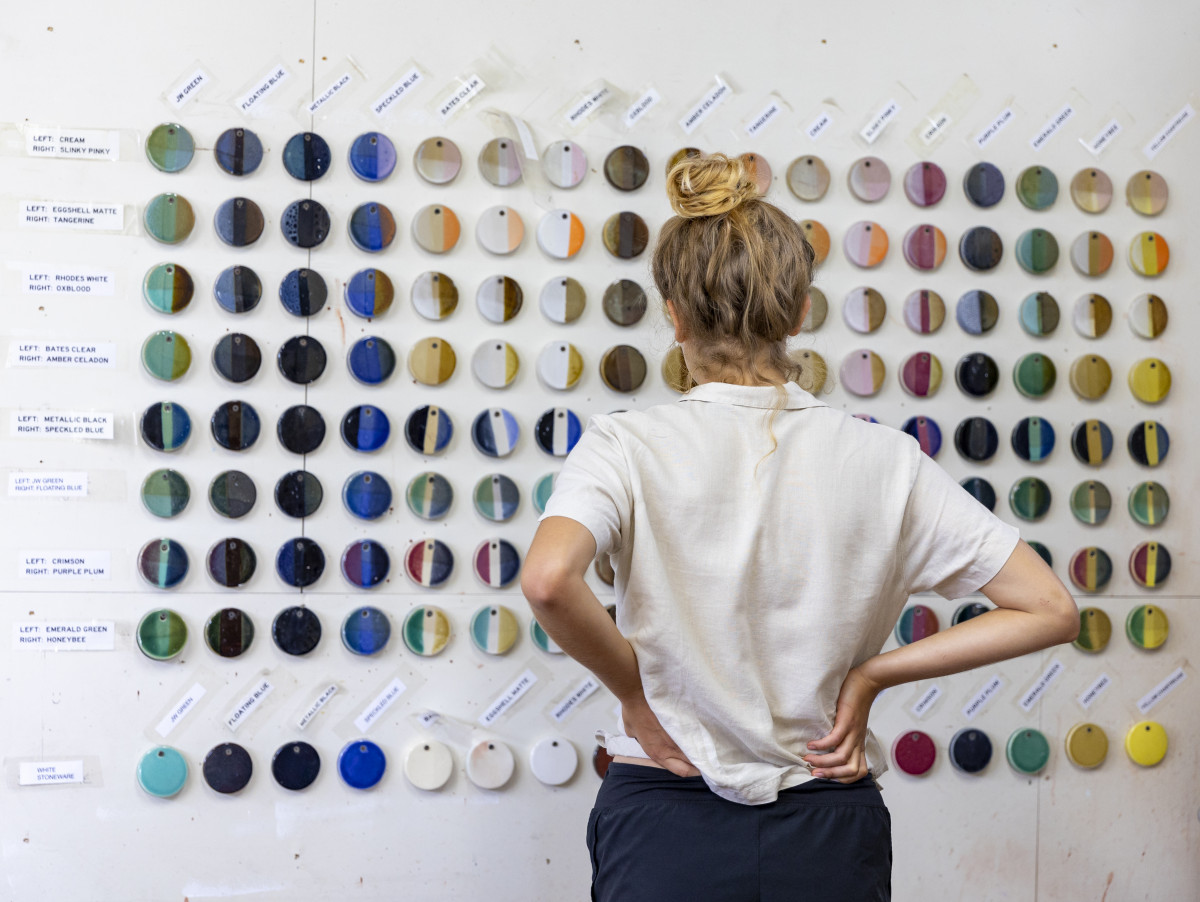
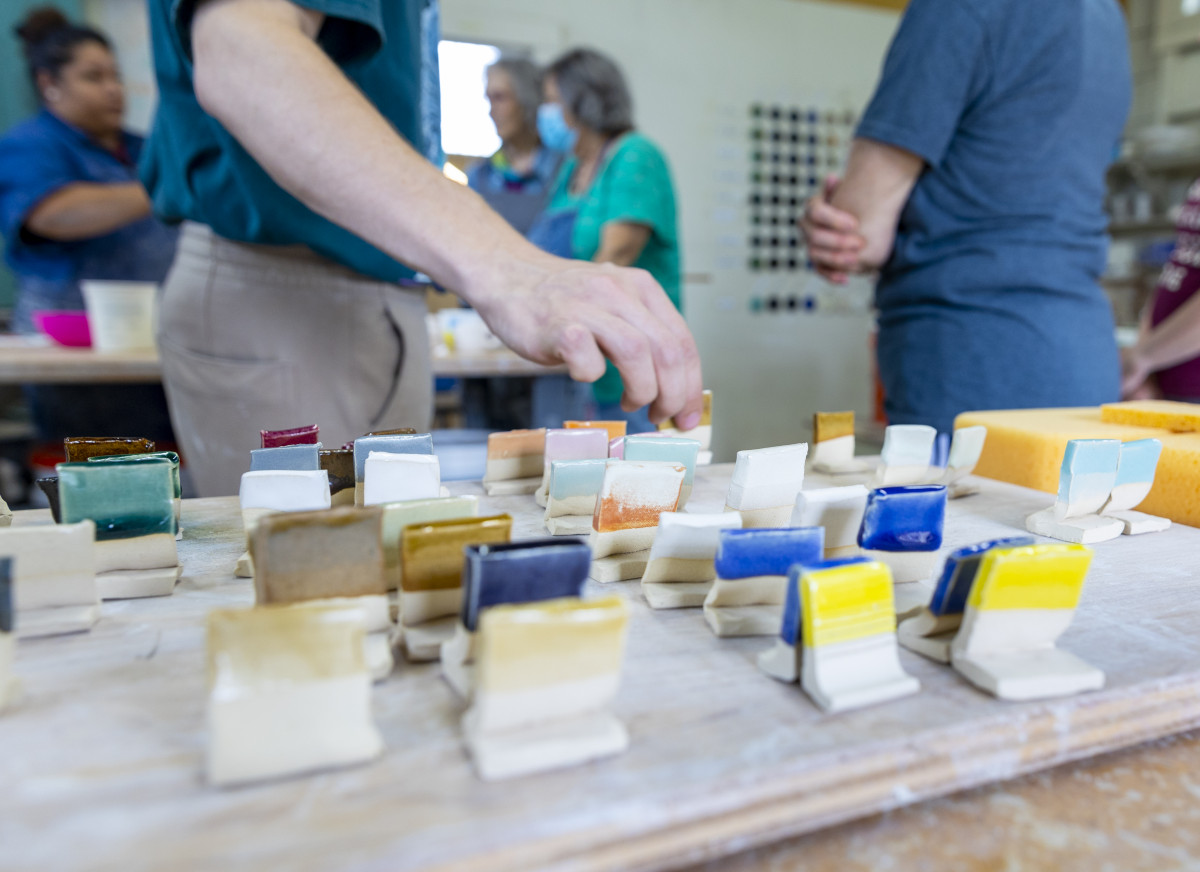
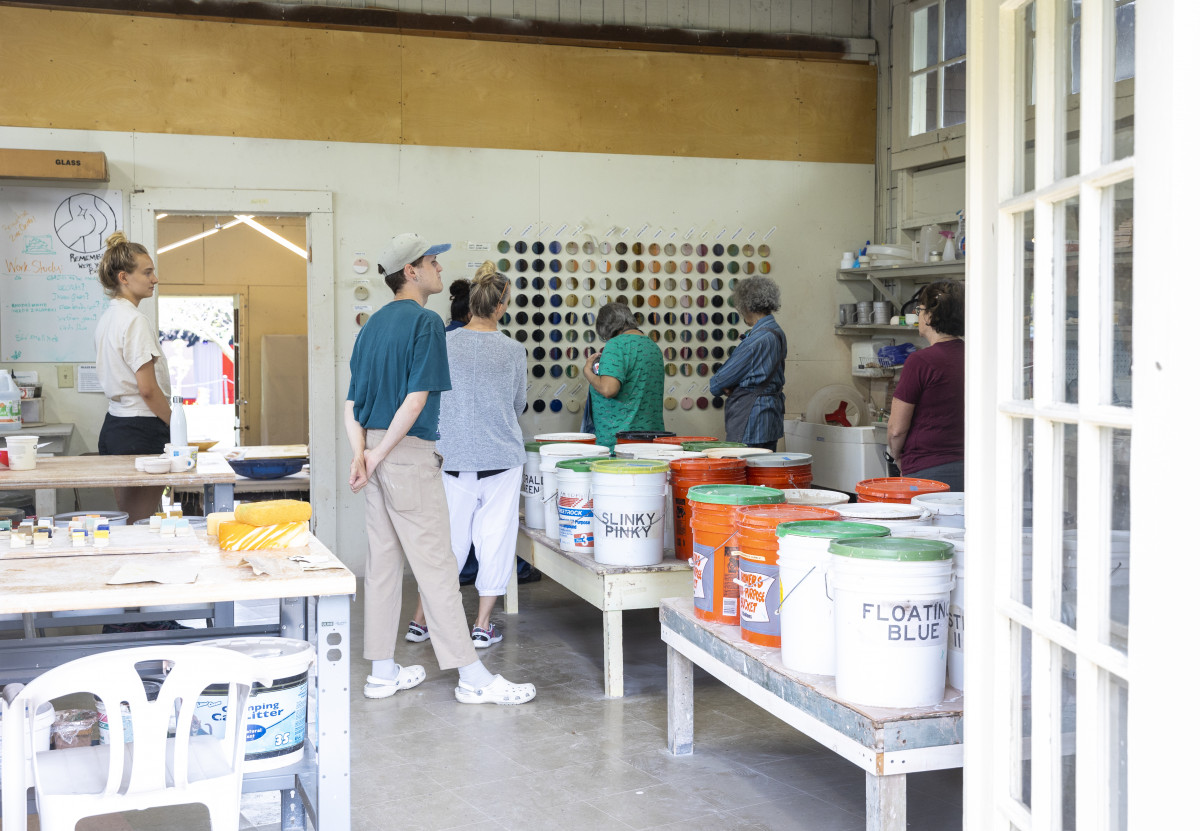
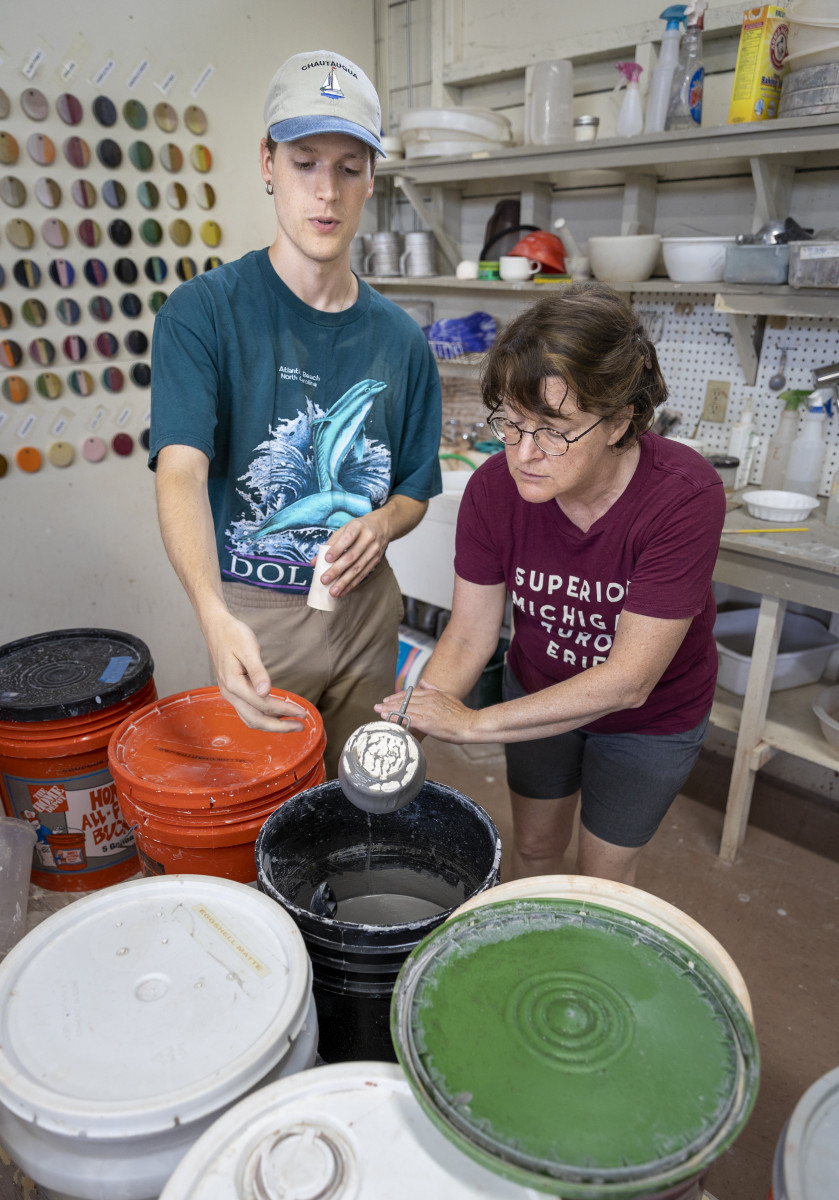
Each weekday, people of all ages and skill levels come together to learn ceramics in the Arts Quad. This is a time for Chautauquans to learn a new skill, express their creativity, and make new friends. Whether they want to make a dish, a pencil holder, or a custom creation, the opportunities are limitless.
The classes, offered through Chautauqua Special Studies, are held Monday through Friday. Students are guided through the entire ceramics process, from throwing to glazing, then take home their finished creation.
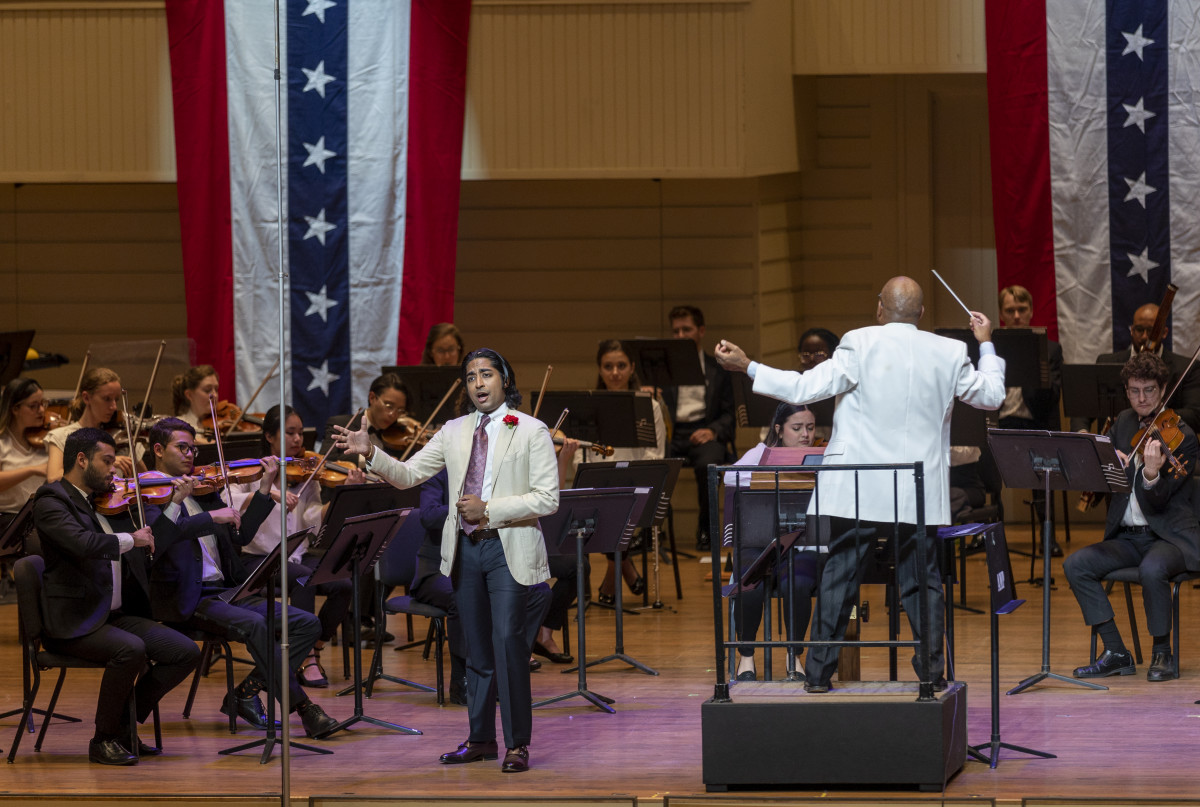
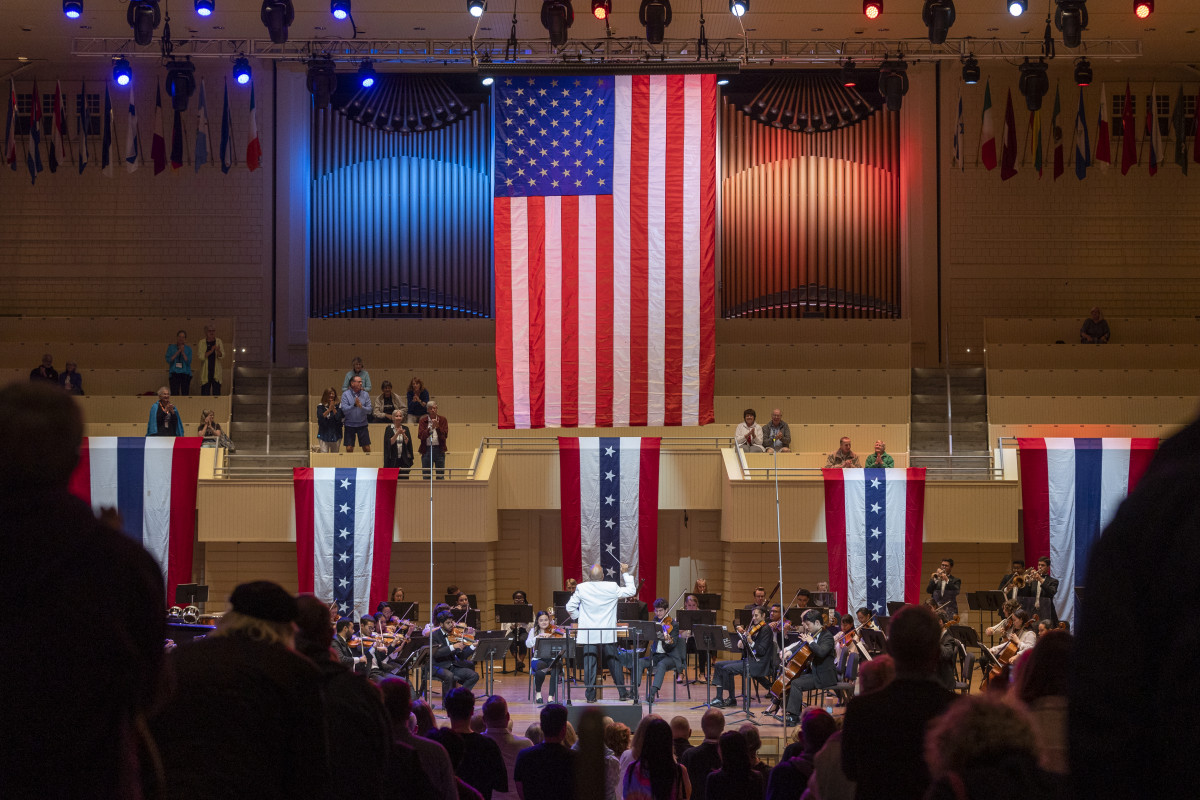
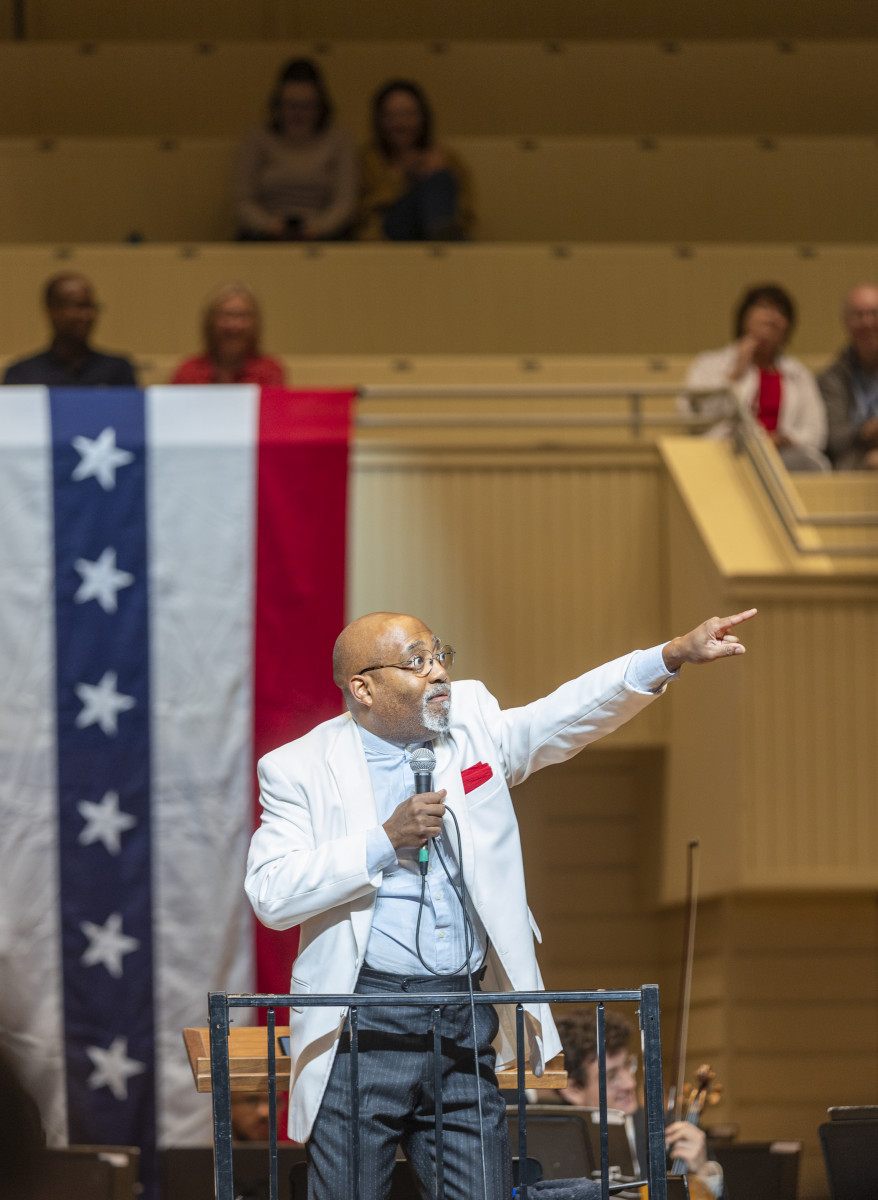


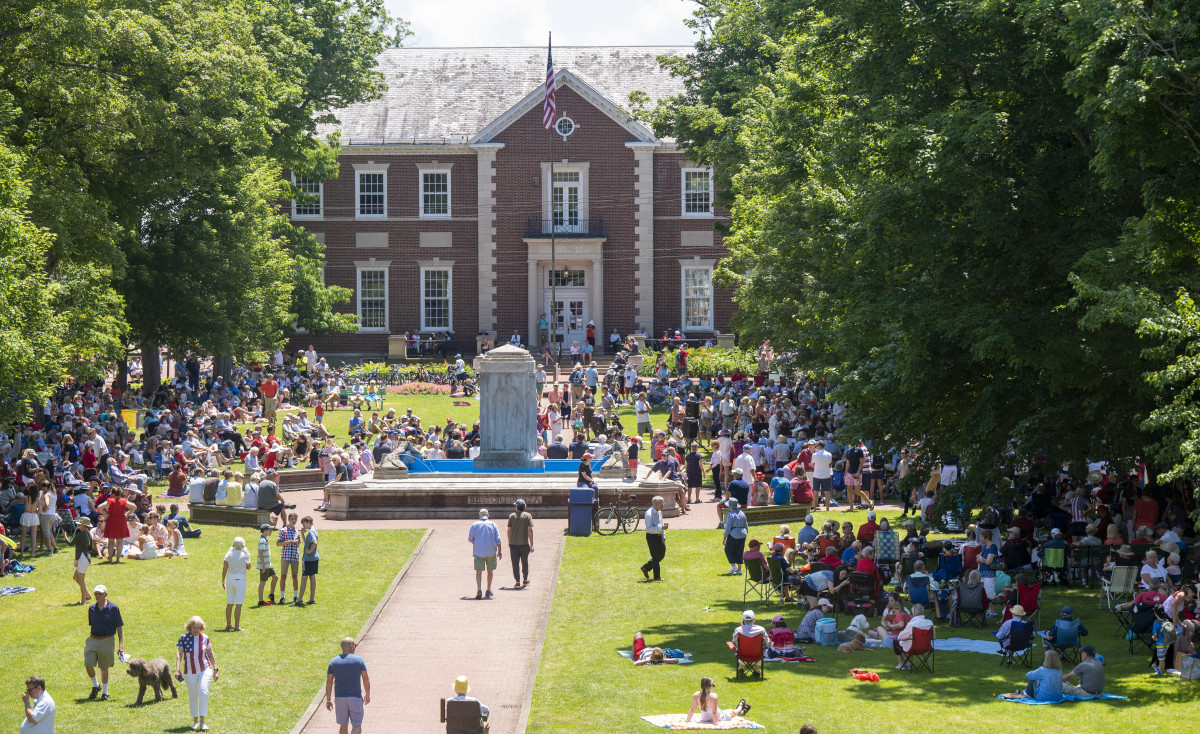
The conductor raises his baton to the ceiling, the orchestra comes to the crescendo of “Stars and Stripes Forever,” and the American Flag unfurls above the stage as the audience rises to its feet in applause. For many Chautauquans it is the quintessential Fourth of July moment, one they look forward to each year. While this year’s Independence Day festivities were a bit different than years past — with guest conductor William Eddins holding the baton, and the Music School Festival Orchestra and Chautauqua Voice Program taking the stage for the annual Independence Day Celebration in the Amp — the weekend signaled a joyous return of some of Chautauqua’s most beloved traditions, of families and fireworks, of celebration and community, in a gathering that President Theodore Roosevelt once described as “typical of America at its best.”
Chautauqua has always been about convening. After a year spent socially distanced, Chautauquans are finally able to come together once more in the community they all love.
All across the grounds, families are holding picnics, Chautauquans are engaging in conversations on porches and benches, once-empty homes are filled with life, and friends old and new are being reunited, many having not seen each other since the 2019 Summer Assembly Season.
With Chautauqua Institution President Michael E. Hill’s Three Taps of the Gavel on Sunday, the season has officially begun, and the most essential element of the Chautauqua Experience, Chautauquans themselves, have come to convene for this 148th Summer Assembly.
It has been a long and painful road, but Chautauquans who have waited two years for this moment are finally home at last.
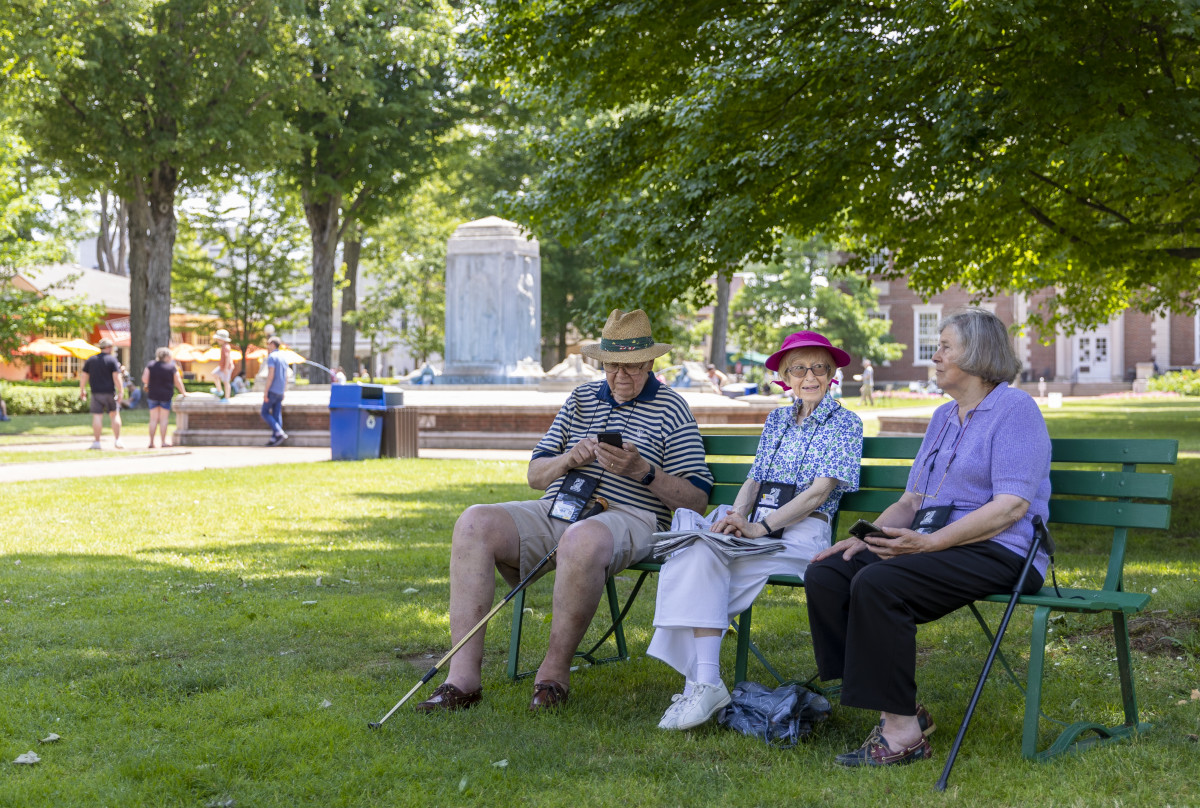


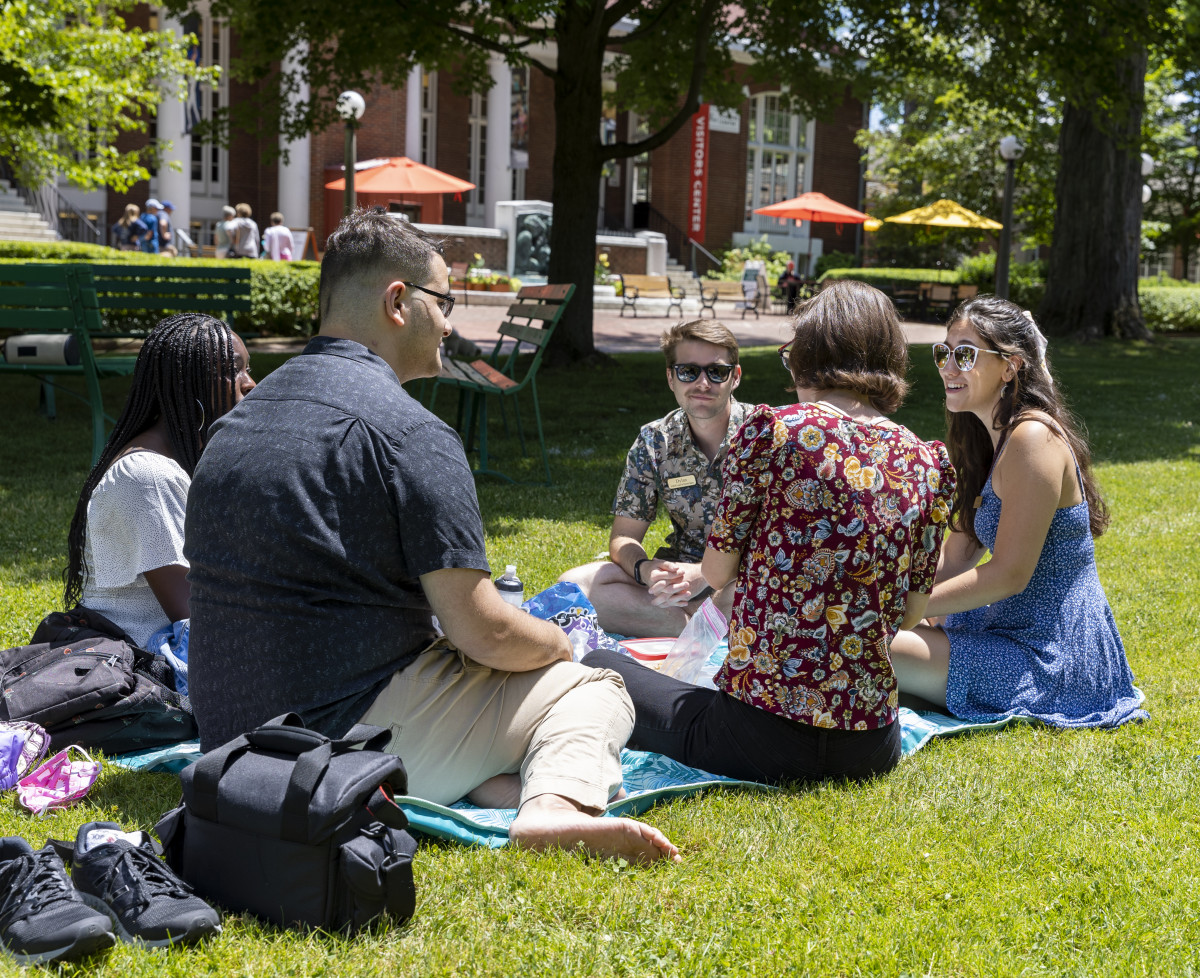
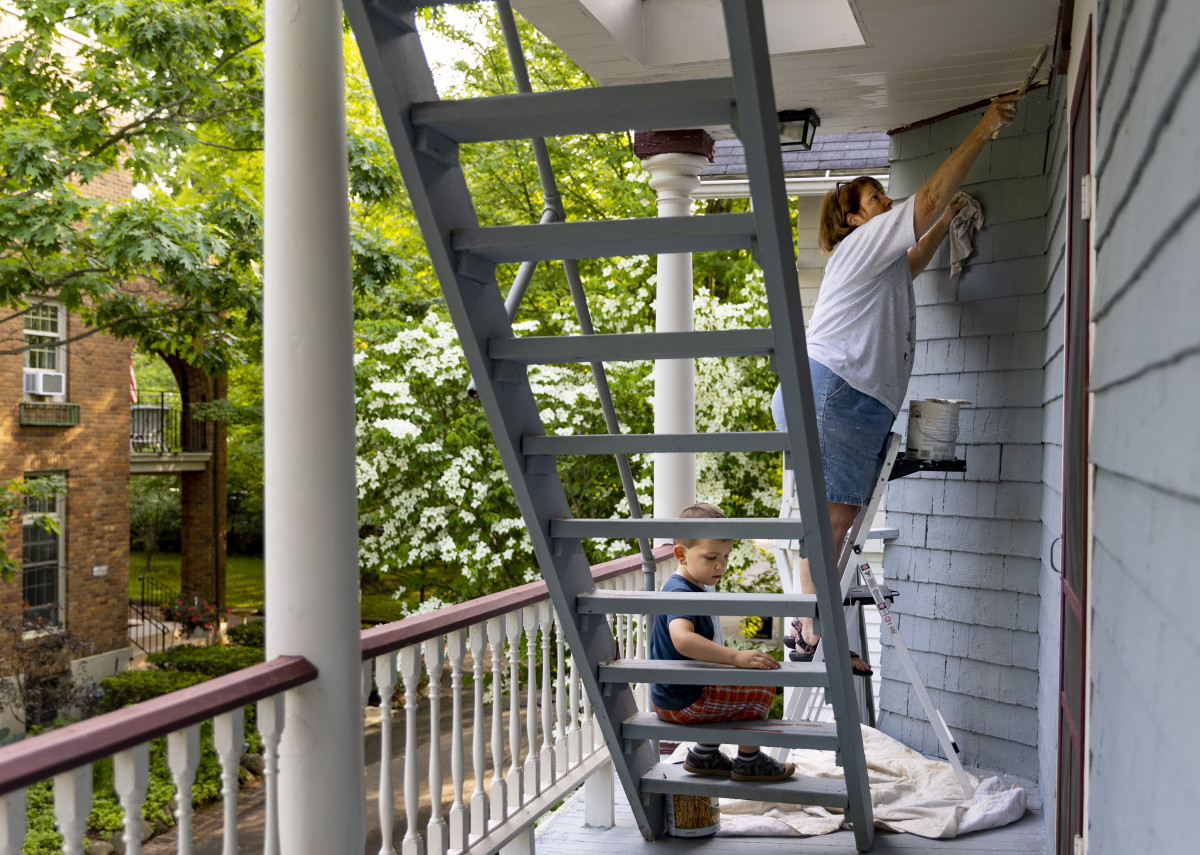

Photos | Demetrius Freeman and Ellie Haugsby and Greg Funka
[slideshow]
Photo 1 – Demetrius Freeman: Nancy Brewer from Los Angeles, Calif., celebrates her Fourth of July with her dog Lucy Ricardo at the Chautauqua Institution. She has been coming to Chautauqua for 28 seasons.
Photo 2 – Demetrius Freeman: Lynn Stahl from San Antonio, Texas, has been coming to Chautauqua since 1998.
Photo 3 – Demetrius Freeman: Marilyn and Jack Carpenter. Marilyn has been coming to Chautauqua for 60 years while Jack has been coming for 26. “It’s like home here and we love it,” Marilyn said.
Photo 4 – Demetrius Freeman: Mike and Sarah Vannatta. Sarah has been coming to Chautauqua since 1974 while Mike has been coming since 1991 one year after they met.
Photo 5 – Ellie Haugsby: The Chautauqua Belle sits at dock near the Pier Building on Chautauqua Lake.
Photo 6 – Ellie Haugsby: Spectators filled Bestor Plaza and the surrounding buildings as the Chautauqua Community Band performed a selection of patriotic songs during their 21st annual Independence Day concert.
Photo 7 – Ellie Haugsby: Jason Weintraub conducts the Community Band on Bestor Plaza.
Photo 8 – Greg Funka: A crowd gathers in Bestor Plaza for the Chautauqua Community Band’s 21st Annual Independence Day Concert.
Photo 9 – Greg Funka: Jason Weintraub, conductor of the Chautauqua Community Band, leads the crowd in singing “God Bless America” at the Band’s 21st Annual Independence Day Concert.
Photo 10 – Greg Funka: Stella, Madeleine, and Amira hang out on the Bestor Plaza fountain during the Chautauqua Community Band’s Independence Day Concert.
Photo 11 – Greg Funka: Austin, Grace, Claire, and Tera play on the Bestor Plaza Fountain during the Chautauqua Community Band’s Annual Independence Day Concert.

Photos | Demetrius Freeman
[slideshow]

Anthony Bannon | Guest Reviewer
Maybe you think you understood it and could even situate it within the dance vocabulary of traditional poses, moves, couplings. Perhaps that charge of Sarah Hayes Watson onto the Amphitheater stage seemed like a violation by some primal creature. Maybe you felt comfortable with that association.
I’ll bet, though, that you recognized that Sasha Janes’ stand-up great little dance called “Last Lost Chance” had knocked you off your feet and succeeded in moving you to a place of wonder, even awe, at how someone might imagine — and then fulfill — such amazing ideas for the body in space. Miss that point, and it might well have been your last lost chance. Chances like the one Janes presented don’t come by very often. This was the real thing, and a good bit of the audience knew it, and took to their feet to give it mighty applause.
Again this year, the North Carolina Dance Theatre returned for residence with Chautauqua Dance, and in its tradition for the first week presented a salon with some of the treasures the company has in its stores.
Sasha Janes is the beloved rehearsal director and sometimes guest choreographer. He owned the evening Thursday.
I hope no one has any programmatic meaning for the piece: some psychodramatic explanation about the inner me and the outer you, or babble about quintessential truths and the basic needs.
[slideshow]
Like Absolute Music or Non-Objective Art, “Lost Chance” is about the exquisite practice of the mind and the surprising capacity of the body. It proposes a practice of mind and body that you’d think appropriate for another dimension, another universe, another kind of human.
Yes, Hayes Watson and Anna Gerberich with Jordan Leeper and Pete Walker with Melissa Anduiza created the work, and you’ll run into them on Bestor Plaza or University Beach. They are the company leaders, and no doubt regular folks, but you’ve got to wonder after seeing them dance: “Just who are these creatures? How is this possible — what they do on stage?”
They are that astonishing, committing every fiber to Janes’ equally extraordinary vision.
At one point a voice in Ólafur Arnalds’ score for “Lost Chance” — an odd, electronically manipulated voice — declares the “screaming silence of the mind” and the voice of wind through leaves. Arnalds, an Icelandic composer, moves easily from the classic concert to pop music stage with a variety of instruments and devices and enjoys breaking rules by proposing in his language of sound the absolutely unheard-of wonders that Janes shares in movement.
And then Anna Gerberich makes a twitch, a sudden shudder, that occurs in a millisecond and by surprise and positions a leg over there were it shouldn’t be and summons an awareness of the greedy art of “Lost Chance.” It is a dance about making art — and I think the anxiety of creating something truly new, not knowing just how it will turn out — that is the ultimate subject of great abstraction.
Anduiza centers the work, making brief appearances and piquant gestures to the couples who have left the stage, completing their turn. She runs in long and beautiful strides around the perimeter of the stage, as if to define it, hold it together, sustain its energy.
“Lost Chance” builds from sensuous couplings to sentiment more extreme, Arnald’s music reaching for amplitude and breaking apart, to fall finally into the organ that begins the work.
“Lost Chance” completed the first section of the evening to sustained applause.
Mark Diamond’s work fulfilled the remainder of the evening. Diamond is the program director of the Dance Salon and associate artistic director of North Carolina Dance Theatre, with Jean-Pierre Bonnefoux, artistic director, and Patricia McBride, associate artistic director.
Diamond’s theme for the evening was good and evil, also the title of the opening dance, created to the chilly music of Antonio Vivaldi’s coldest of the “Four Seasons,” a fascinating choice for a vigorous confrontation by Leeper and Walker, the evil part, then ministered by Gerberich soothing the fallen Leeper and ending in a third movement with a compelling construction by Anduiza, Gerberich, Leeper and Walker, in which they struggle to achieve a fitting harmony, only to see it fracture, like broken glass, in a disassembly of an architecture startling for dance.
Diamond lovingly plays into each dancer’s strength; for instance, his utilization of the art nouveau lines that Gerberich so beautifully assumes through her body, in motion and still amazingly creating the sinewy, haunted line of last century’s avant-garde, from forehead to extremity, finger to foot.
The theme of good and evil continues in a piece called “The Advocate,” a narrative of power and submission, of threat and persuasion that works equally for an exorcism as for the development of Fascism. Kate Behrendt, Hayes Watson, David Morse and Daniel Rodriguez perform.
Following intermission, Diamond opened with a reprise of the The Thorn Birds, Colleen McCullough’s novel about priestly dalliance that became what still is the second-most popular television mini-series (after “Roots”).
Well, not really, but how many narratives are there that engage the confusion between godly and carnal love? This is one, with Leeper and Hayes Watson as the star-crossed lovers. The strength of characterization that Hayes Watson brings to every performance — her total conviction, from grace to passion, at every moment of the piece, called “Sunset Road” after the Bela Fleck tune, carries the conceptually thin work home.
The evening ended with a featured role for the company’s third great woman, Anduiza, playing the soul of Japanese tradition, the temperance behind conflict, a unifying principle, an ultimate balance that becomes corrupted and ultimately destroyed, raped by vulgarity and violence. She is extraordinary, through a range of sensibilities, and her men — Greg DeArmond, Rodriguez and Walker — spent more testosterone than should be legal for a dance floor. Music, appropriately, was the drumming of Leonard Eto, “Zoku.”
Quite a night.
Anthony Bannon is the Ron and Donna Fielding Director of the George Eastman House, the International Museum of Photography and Film in Rochester, NY. He had been a dance and theater critic for The Buffalo News.
